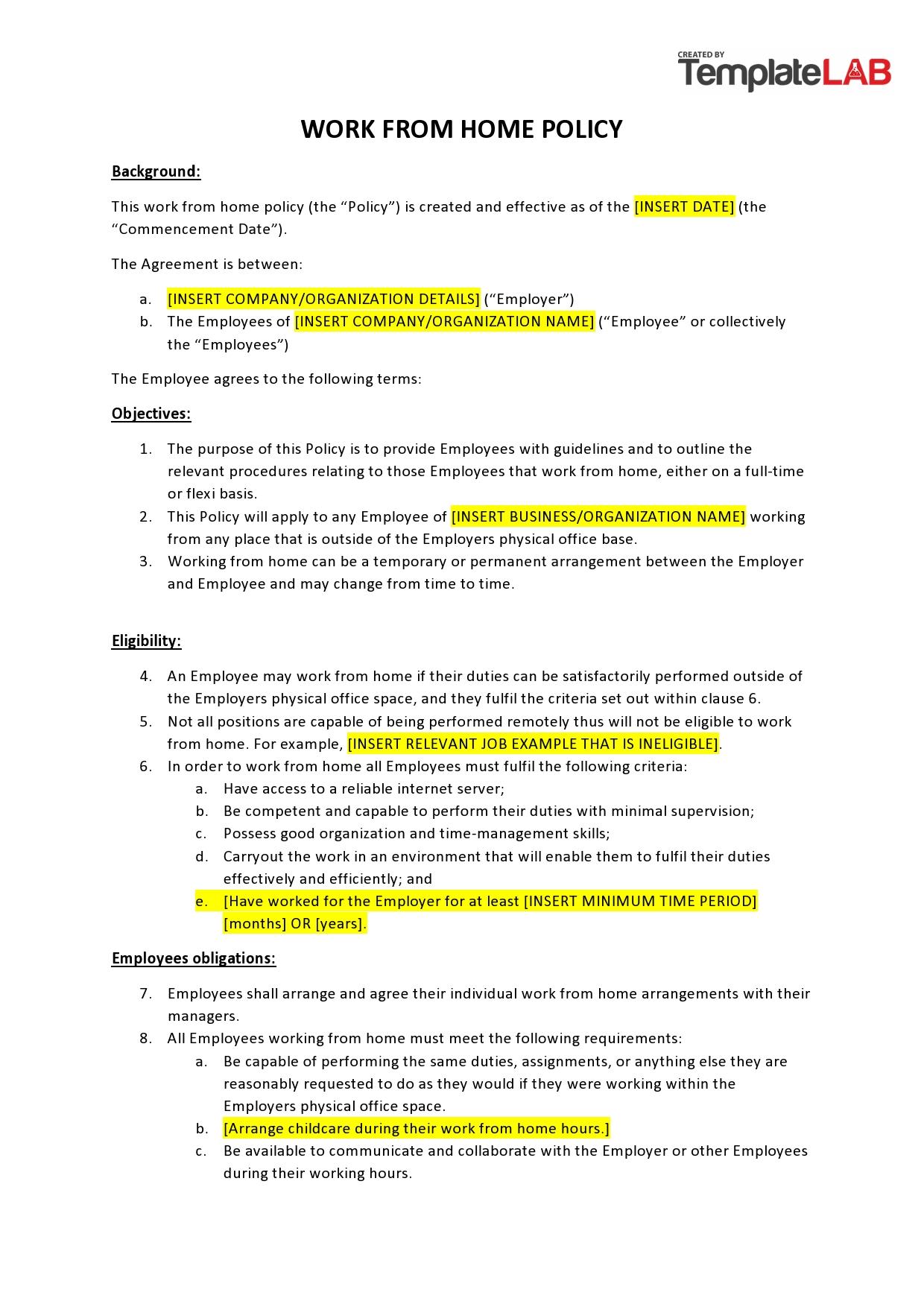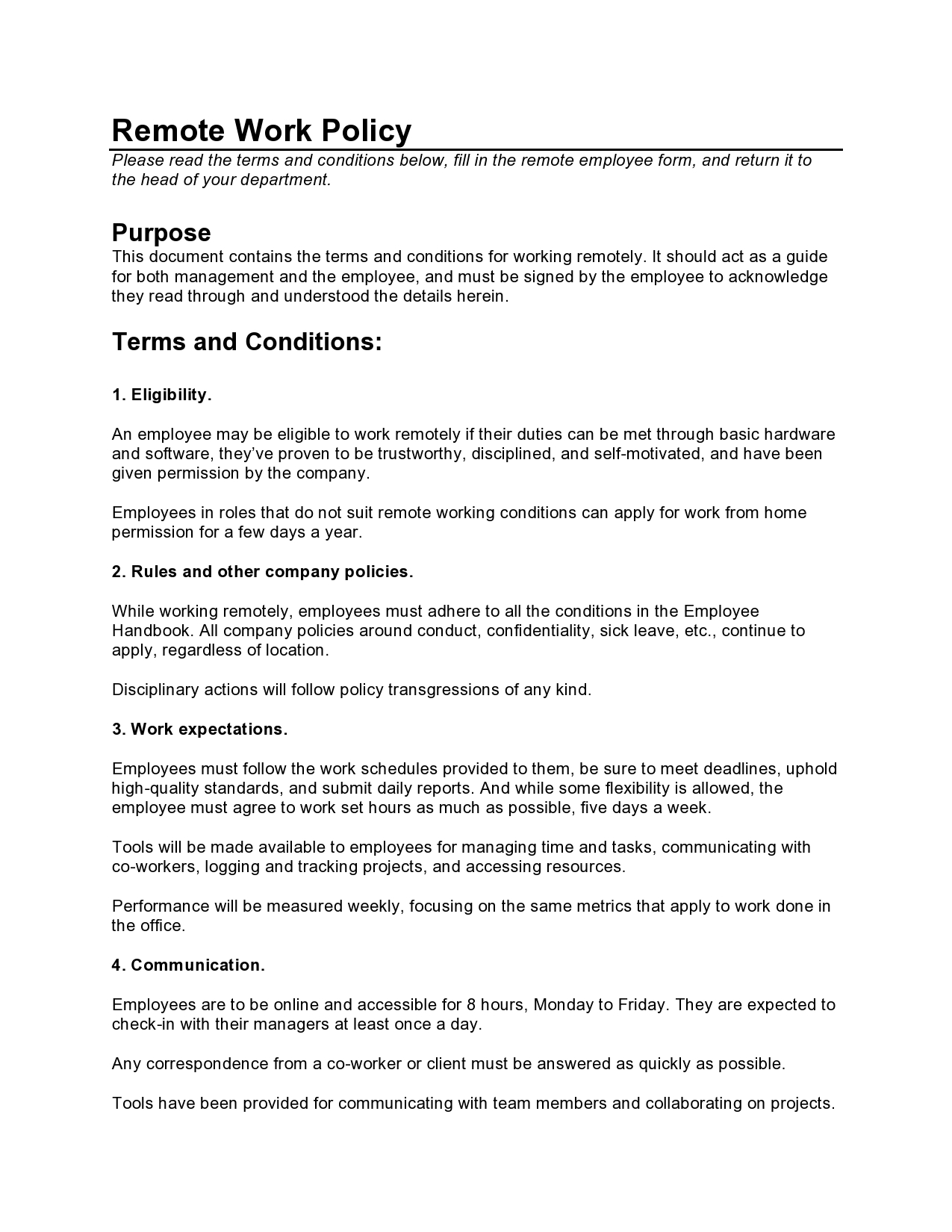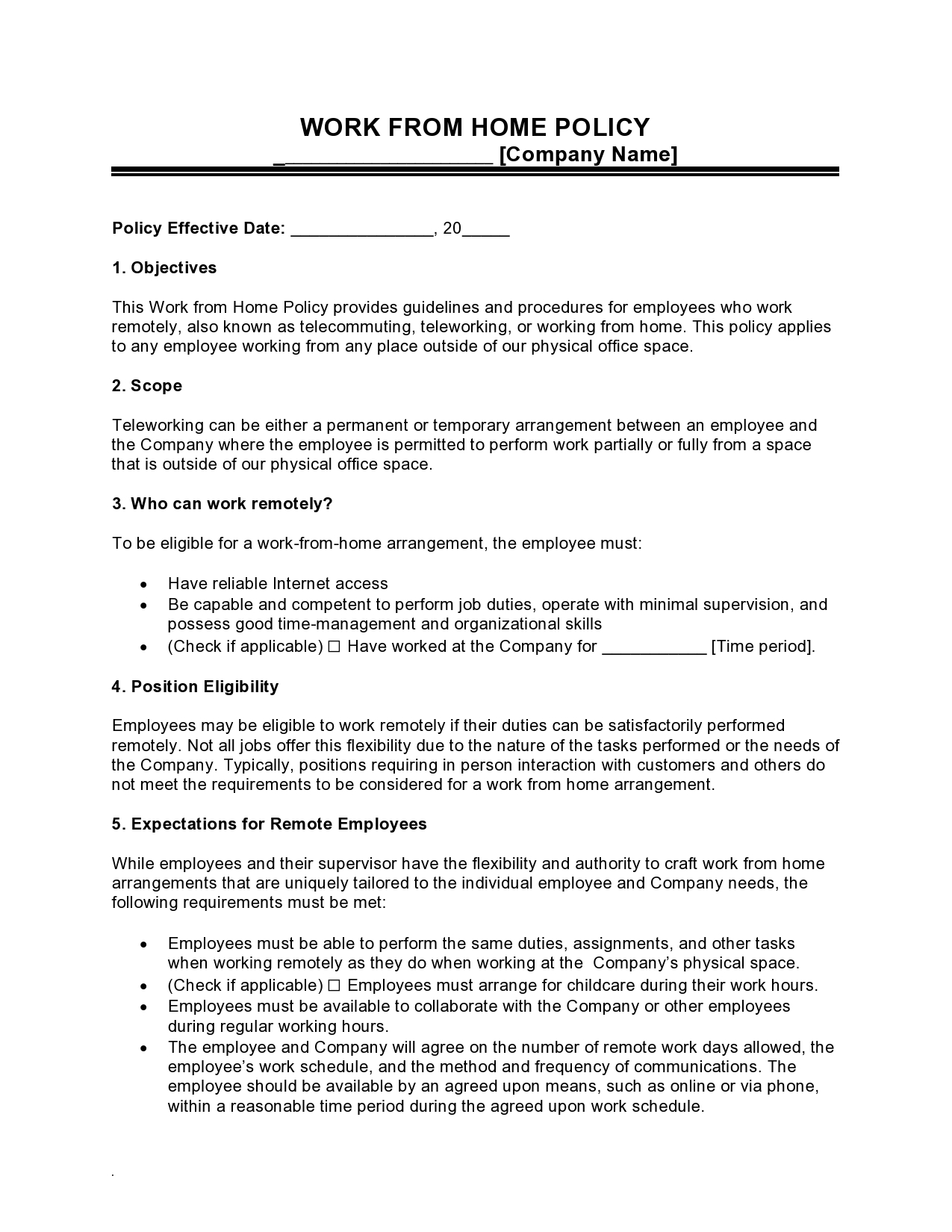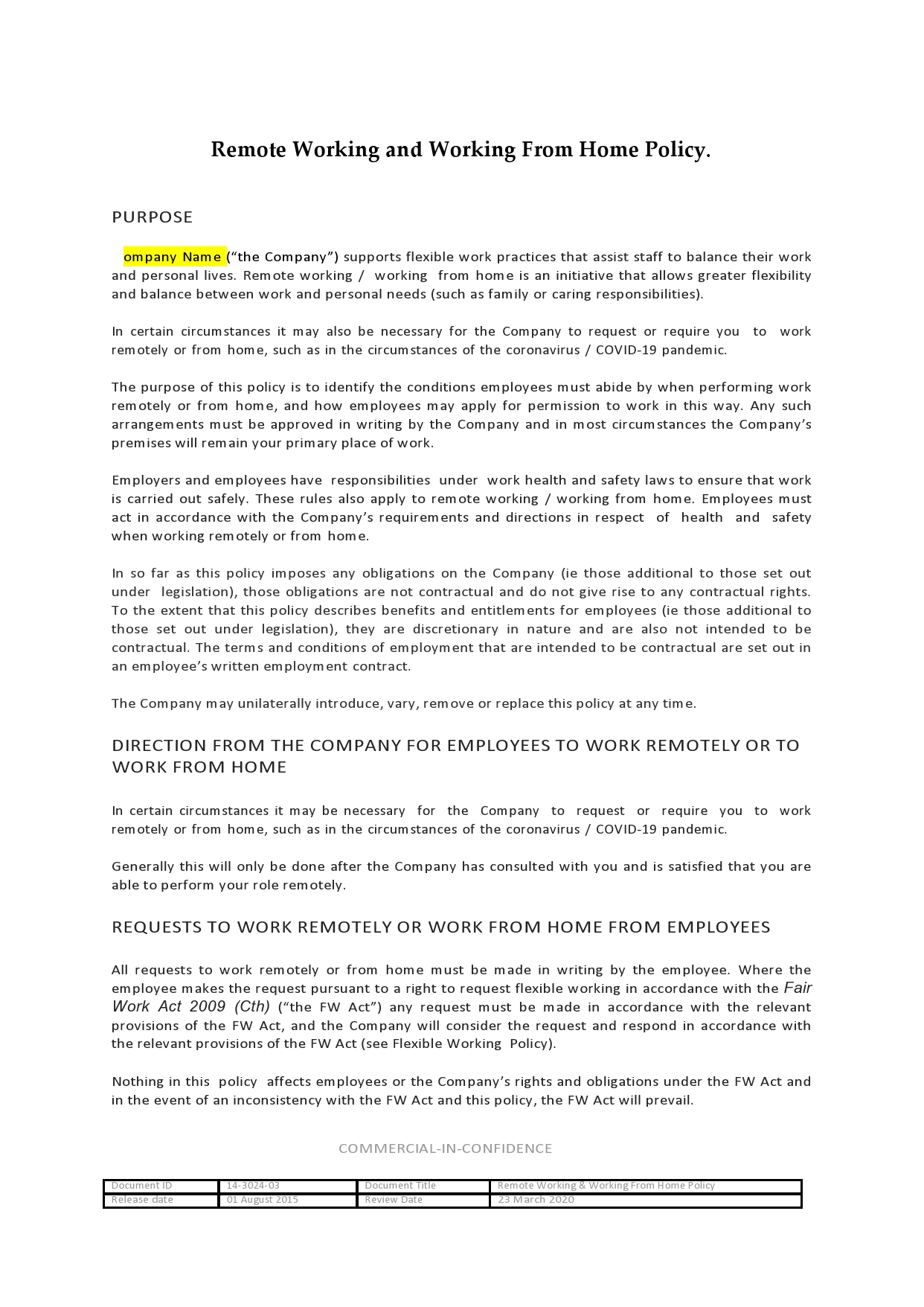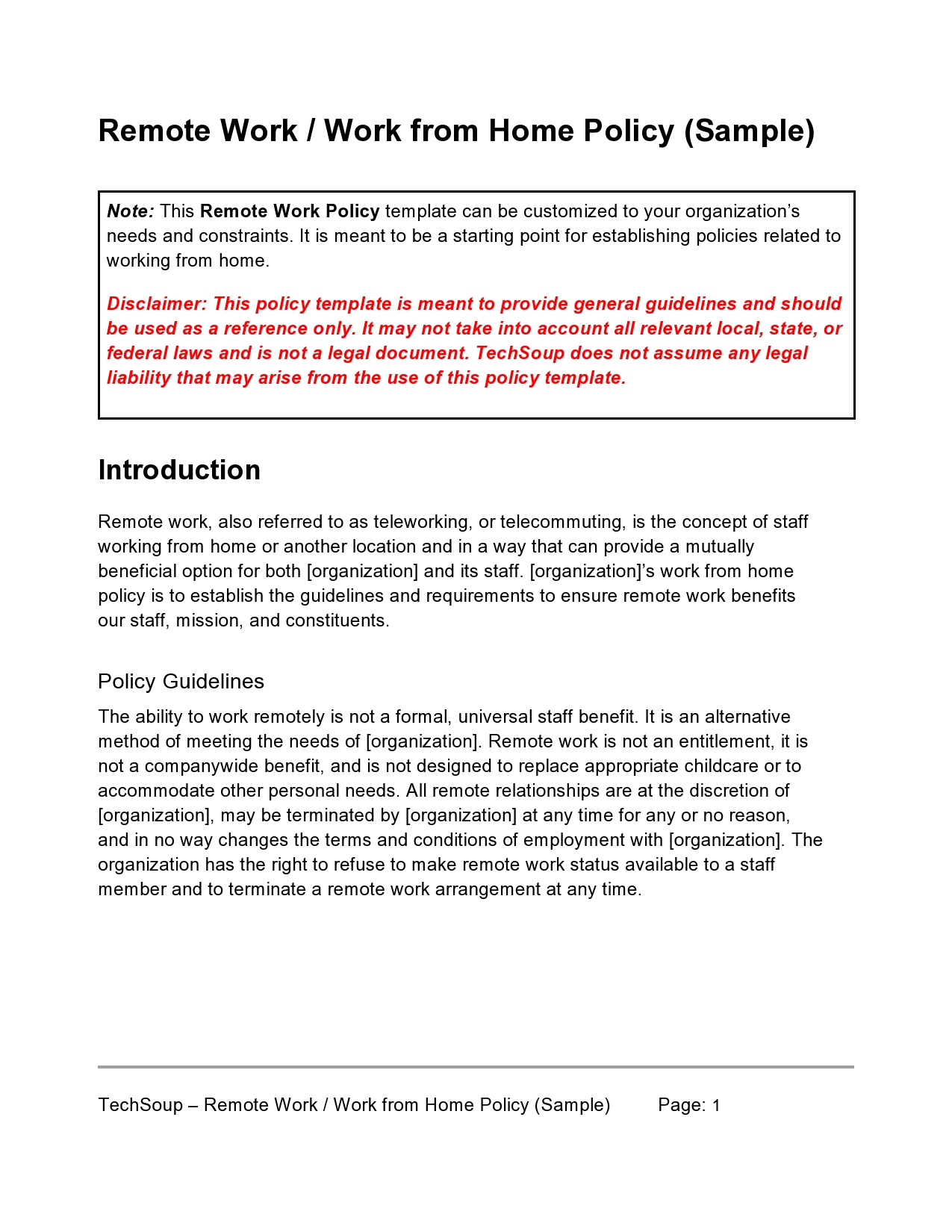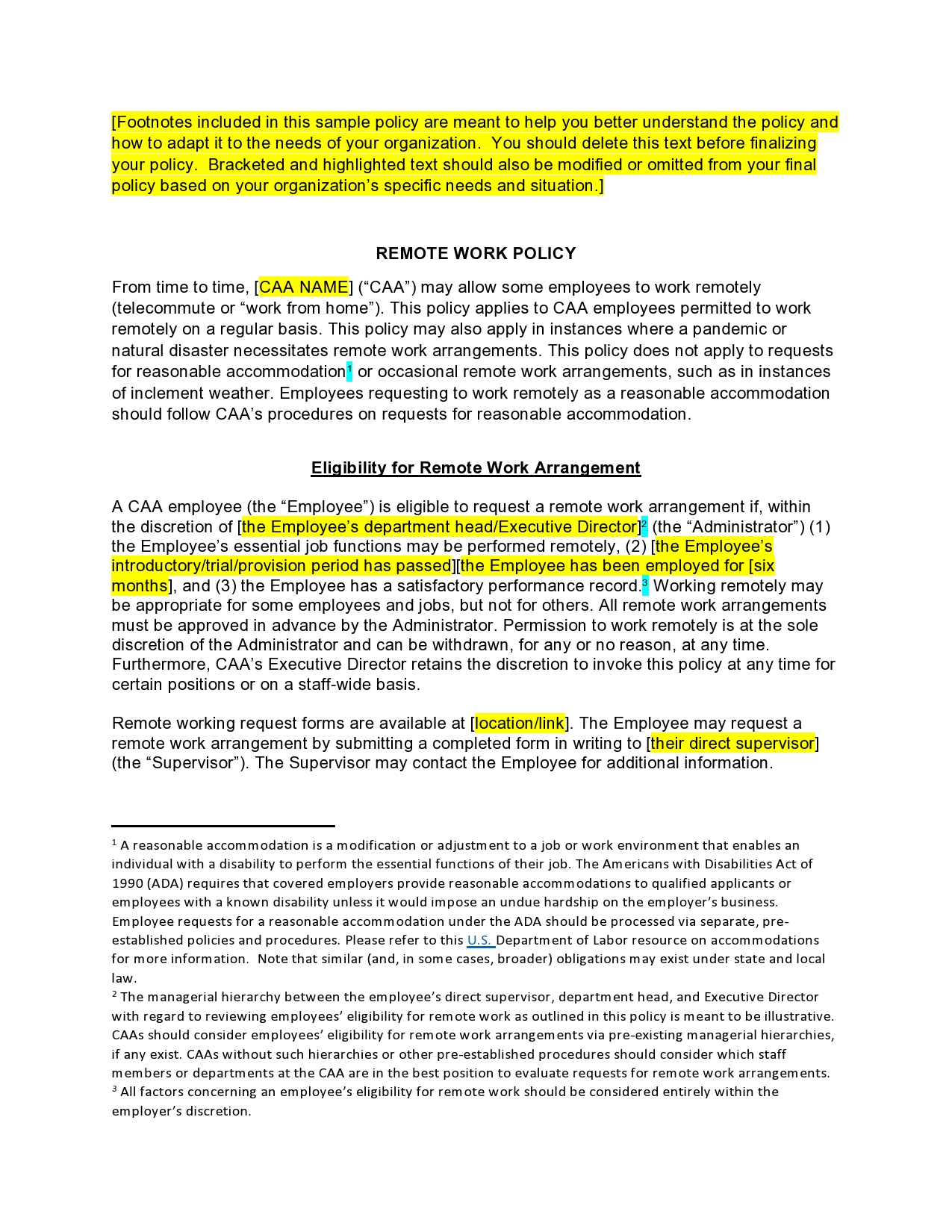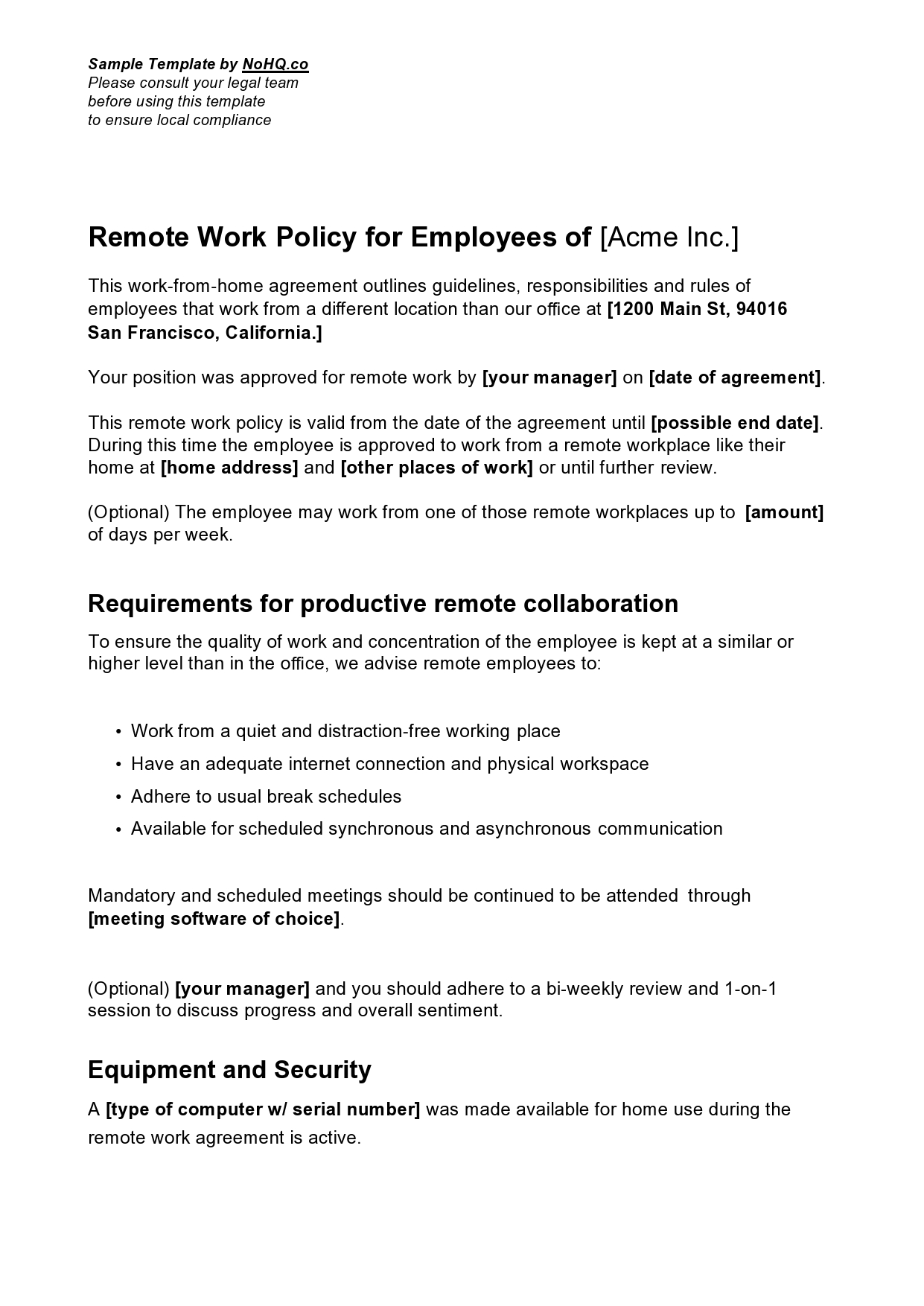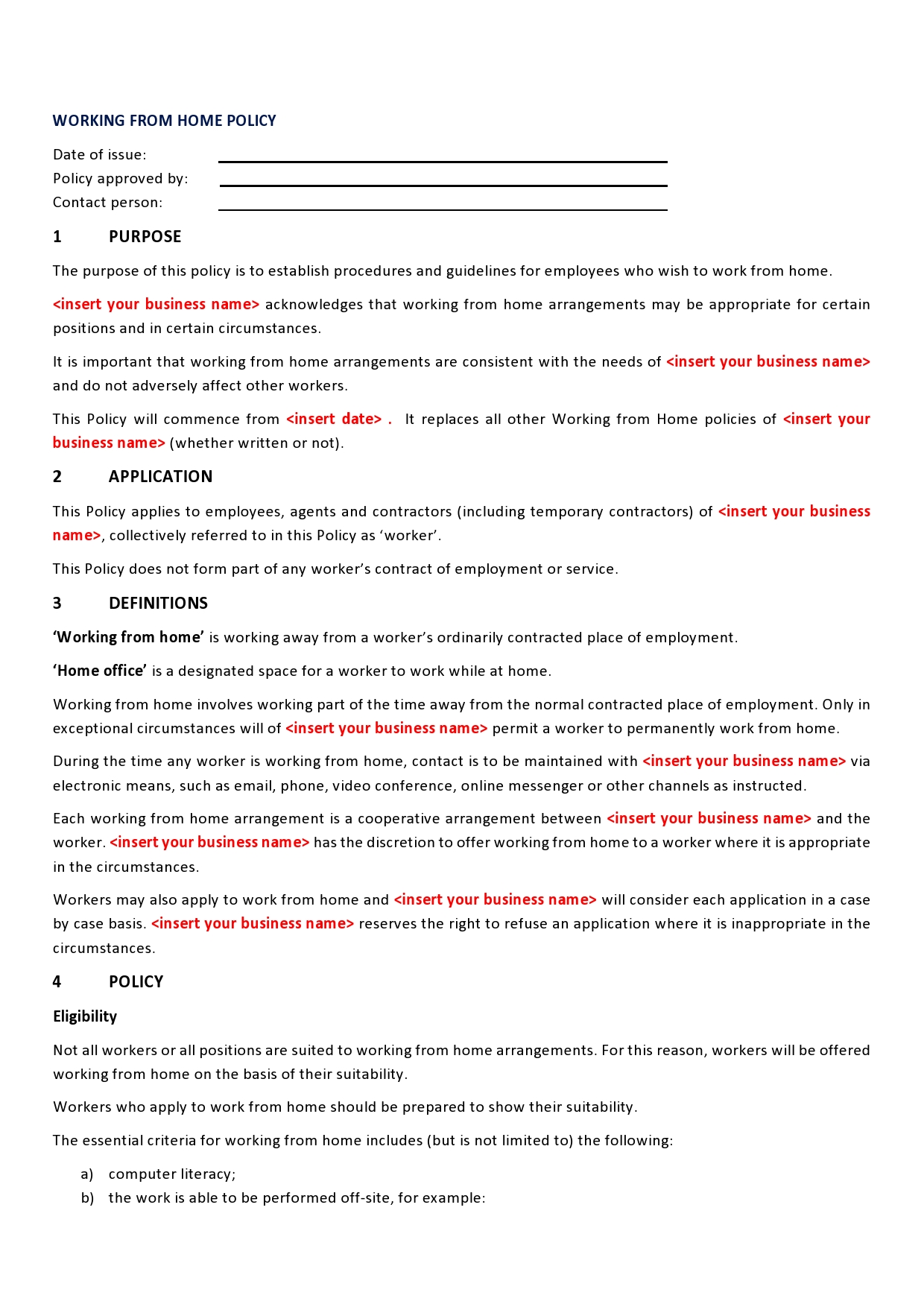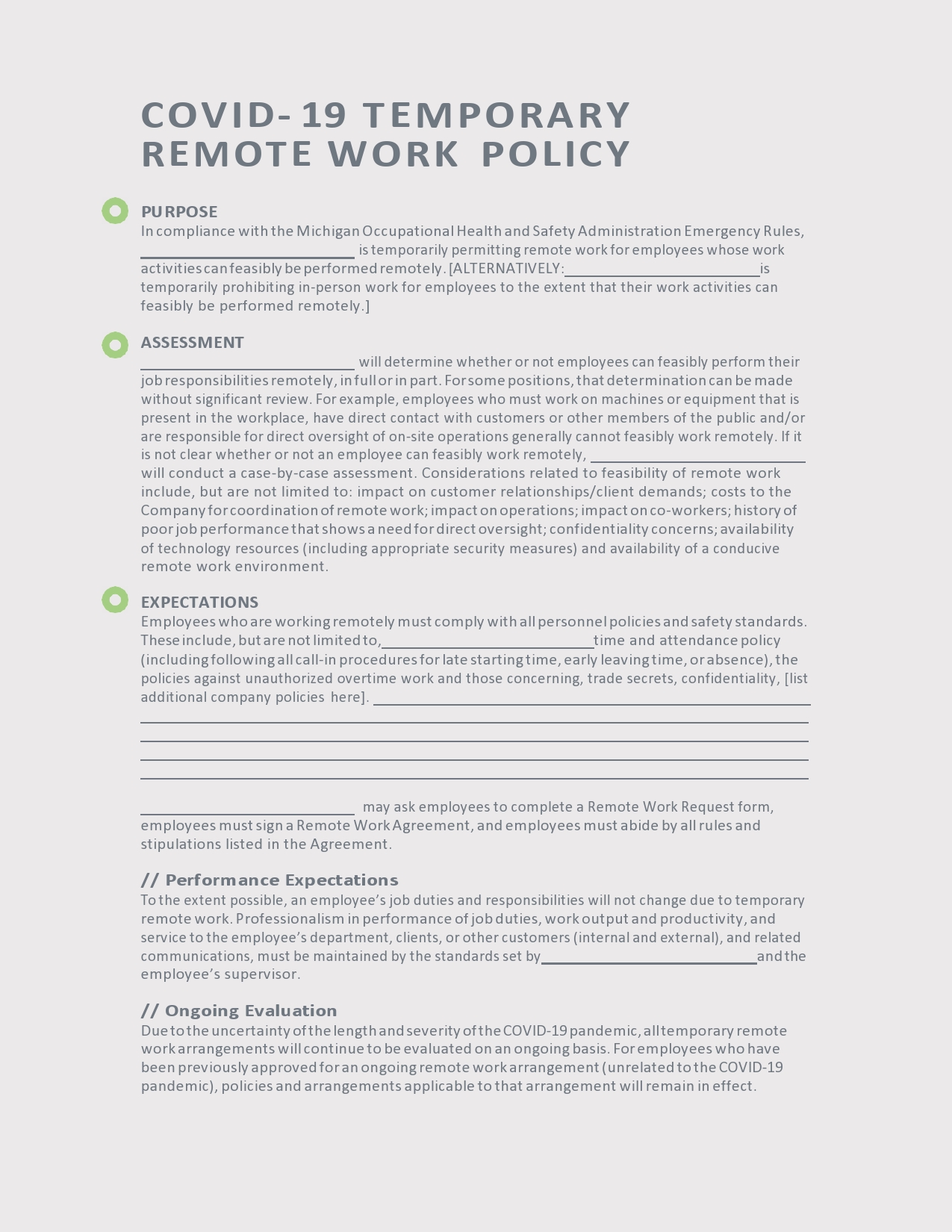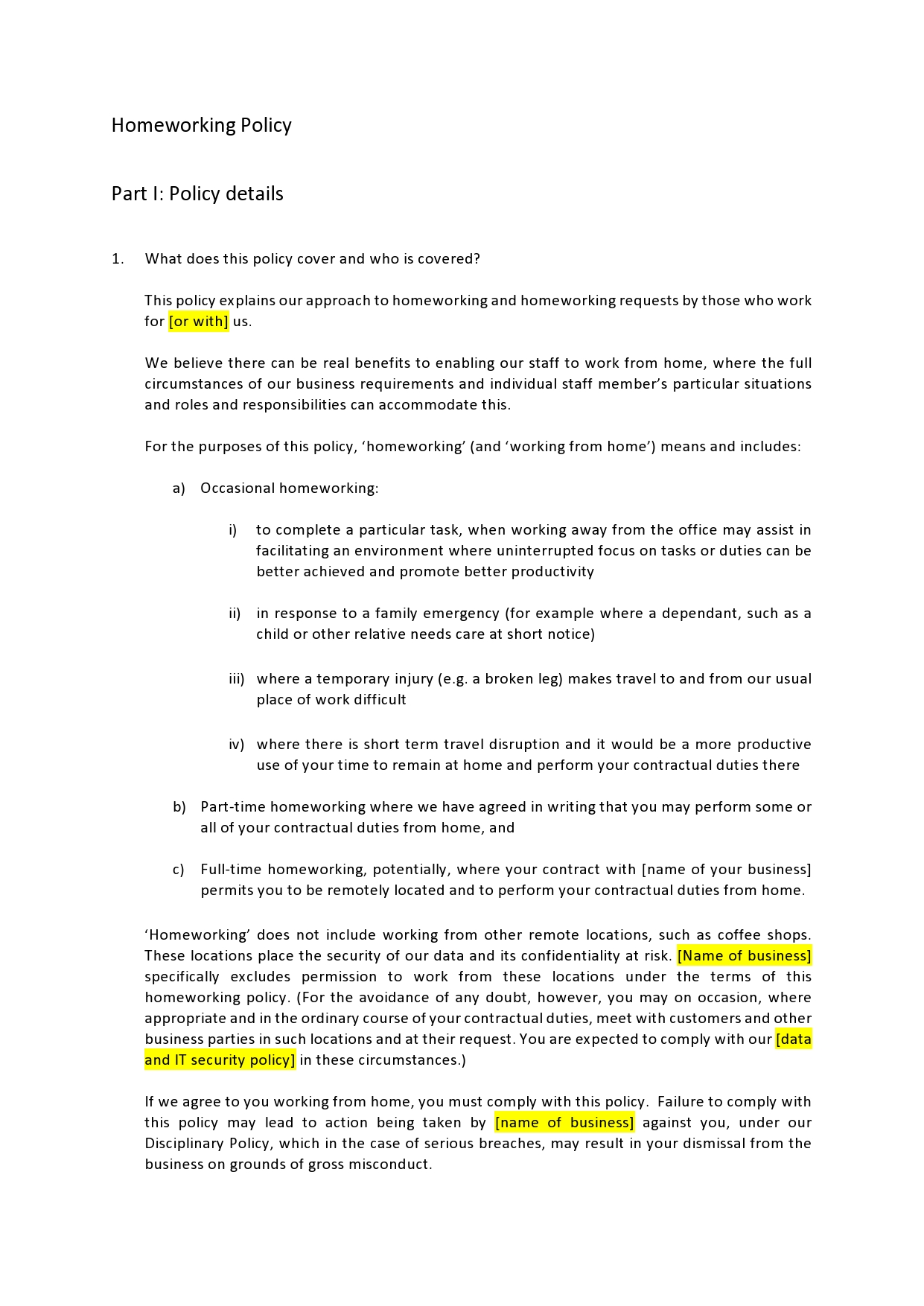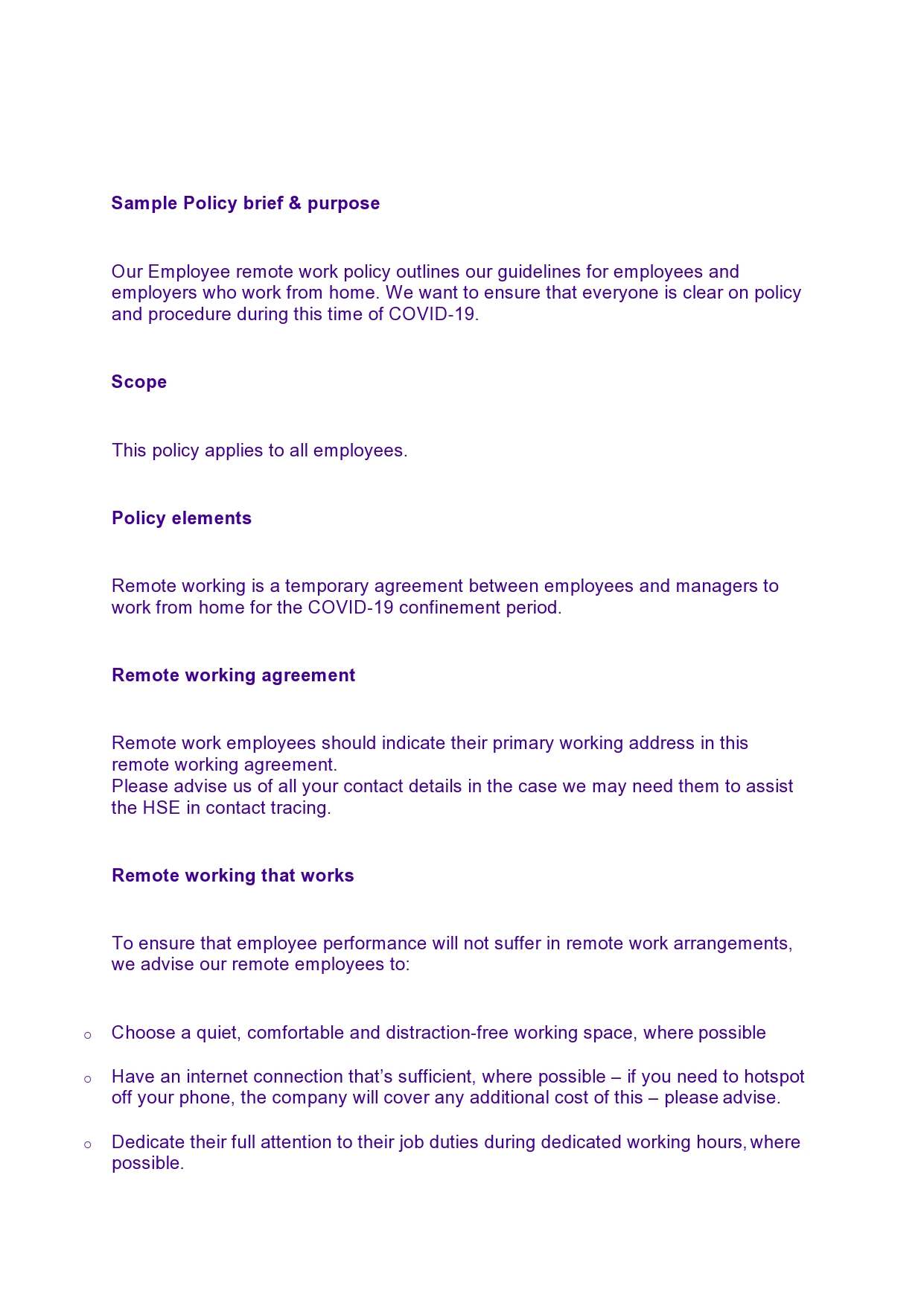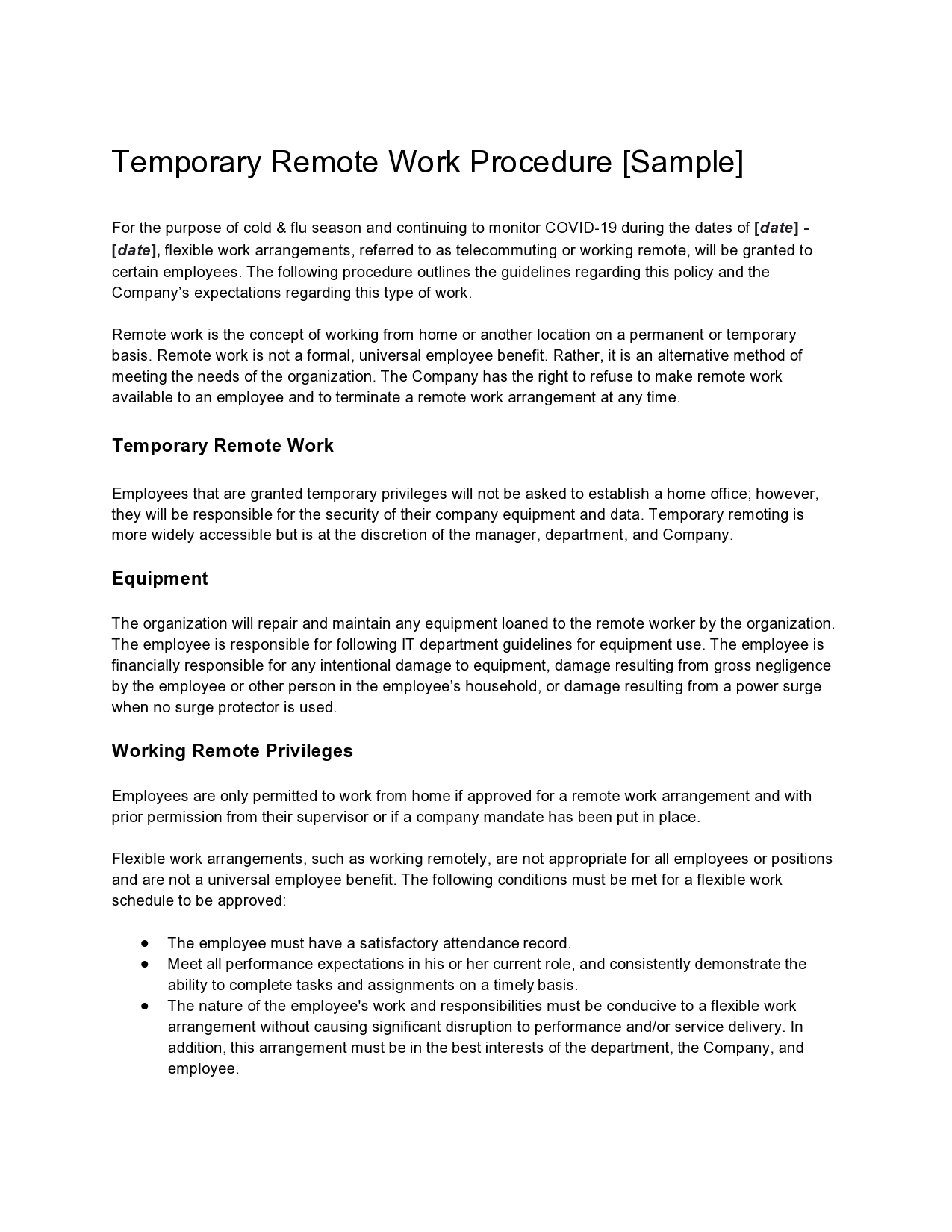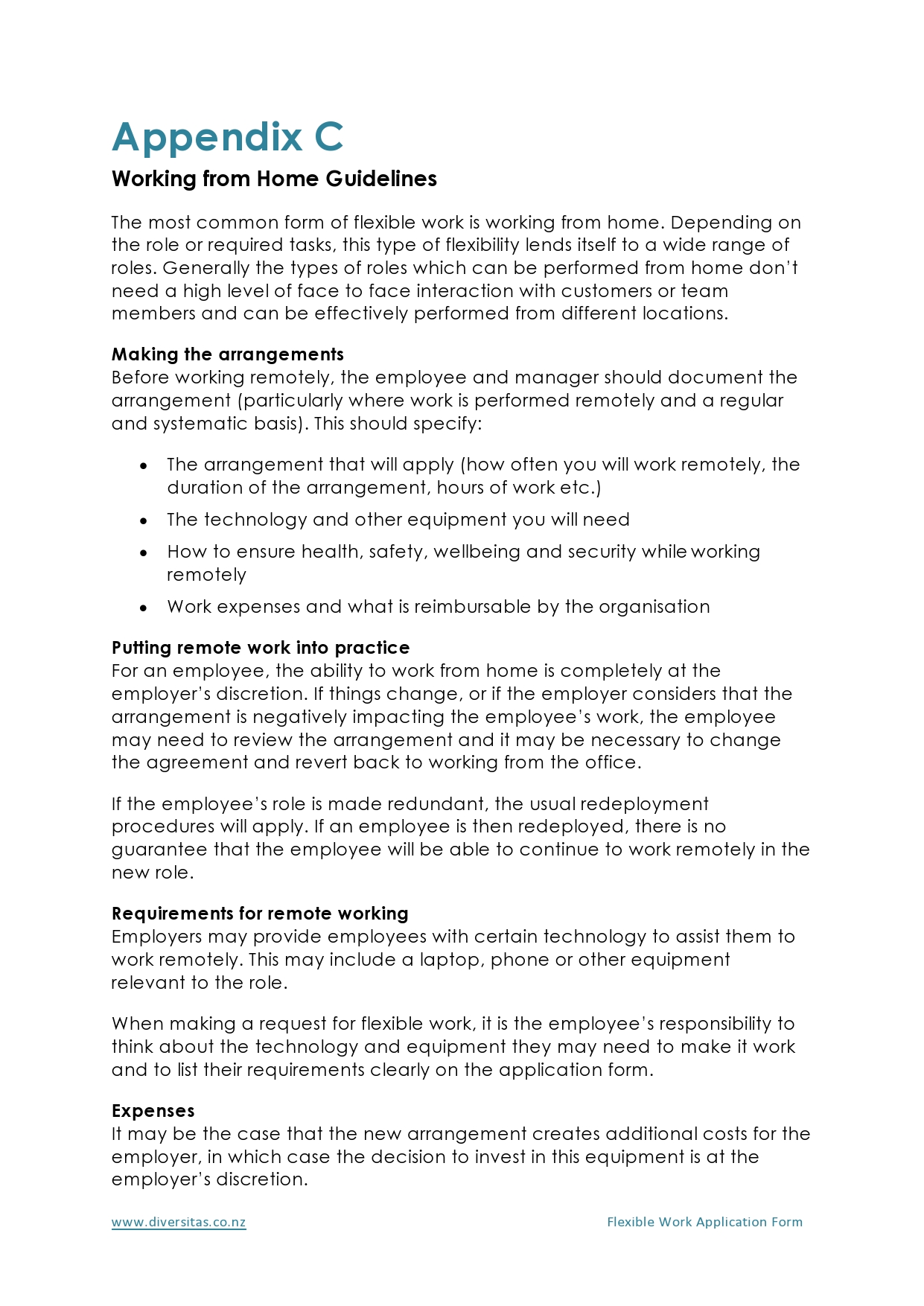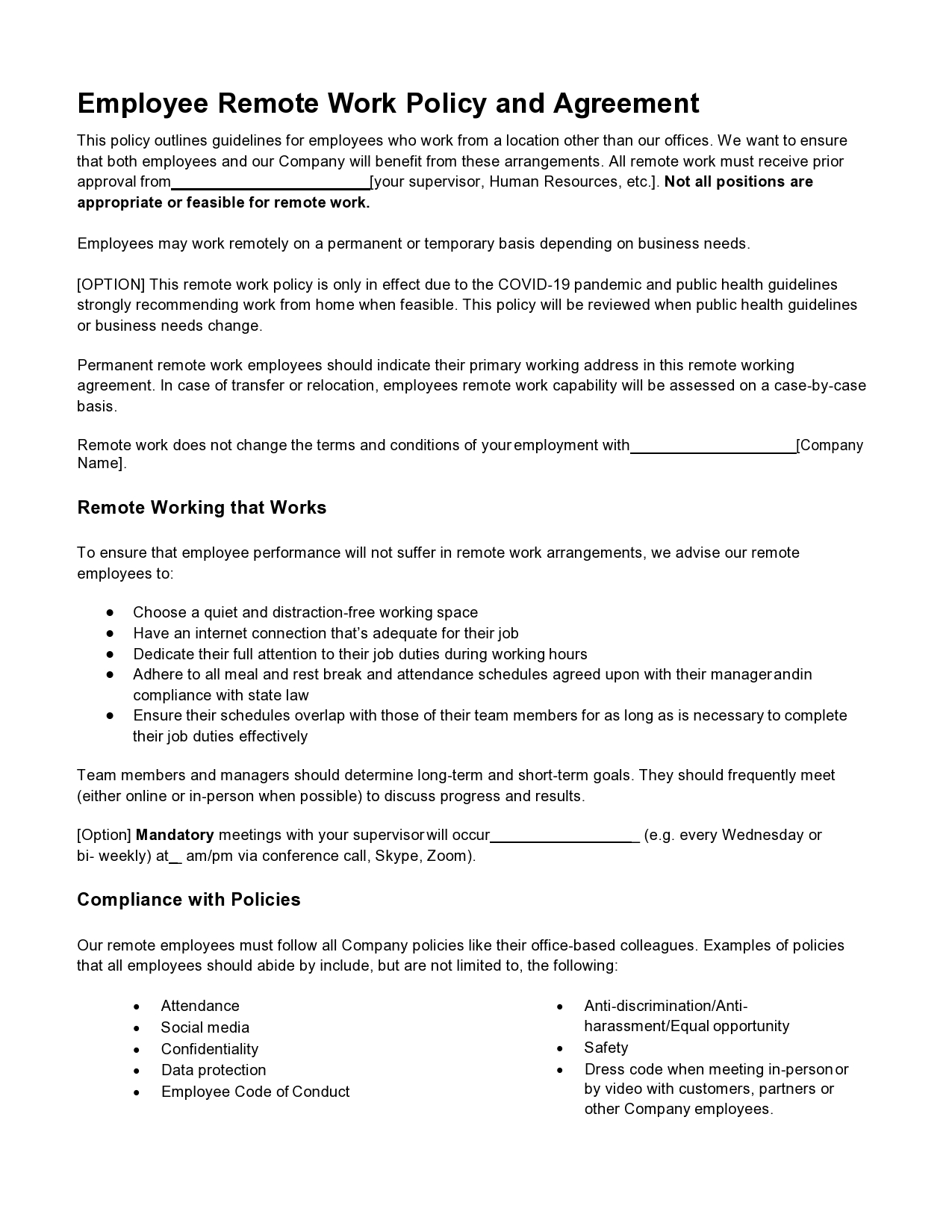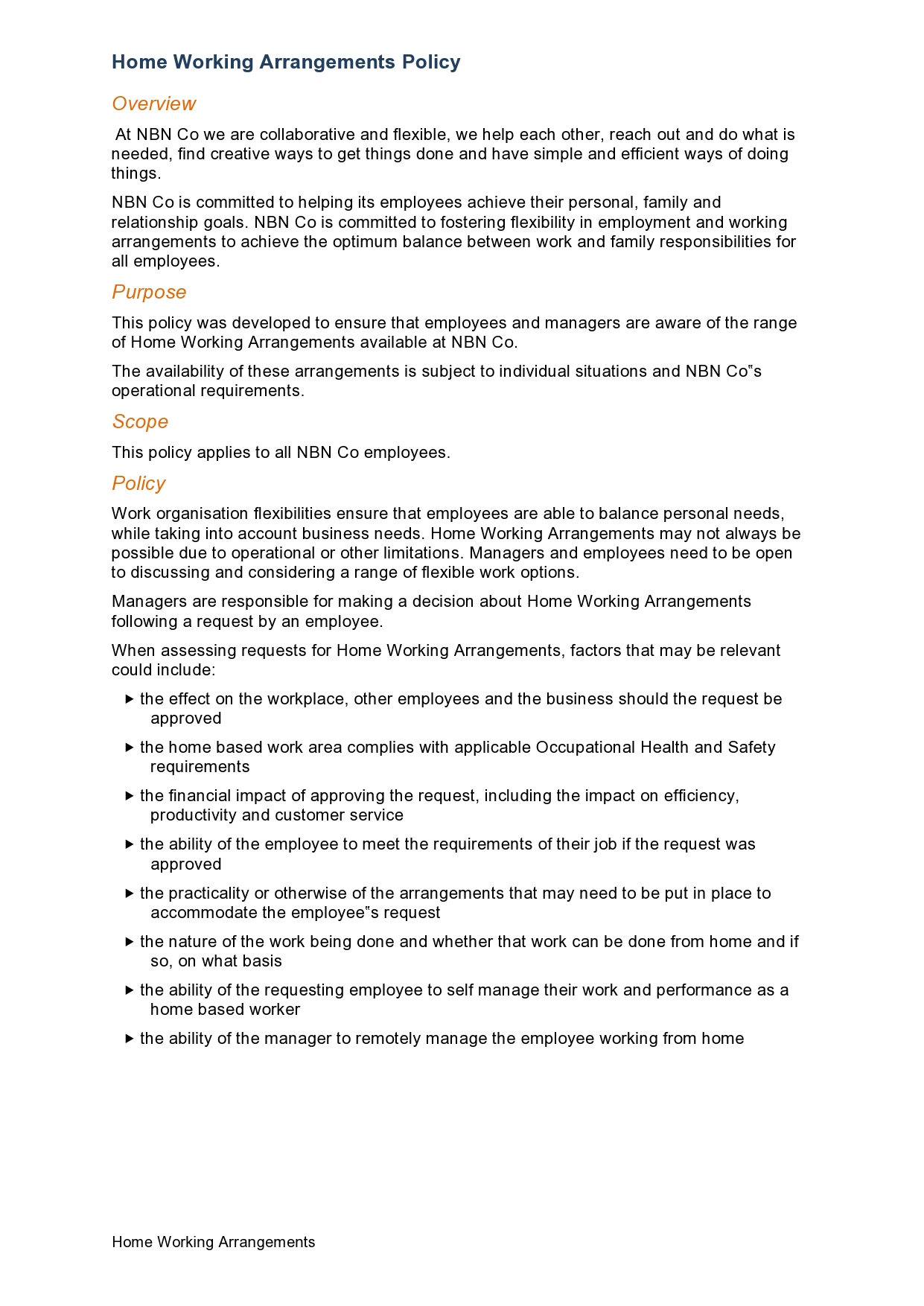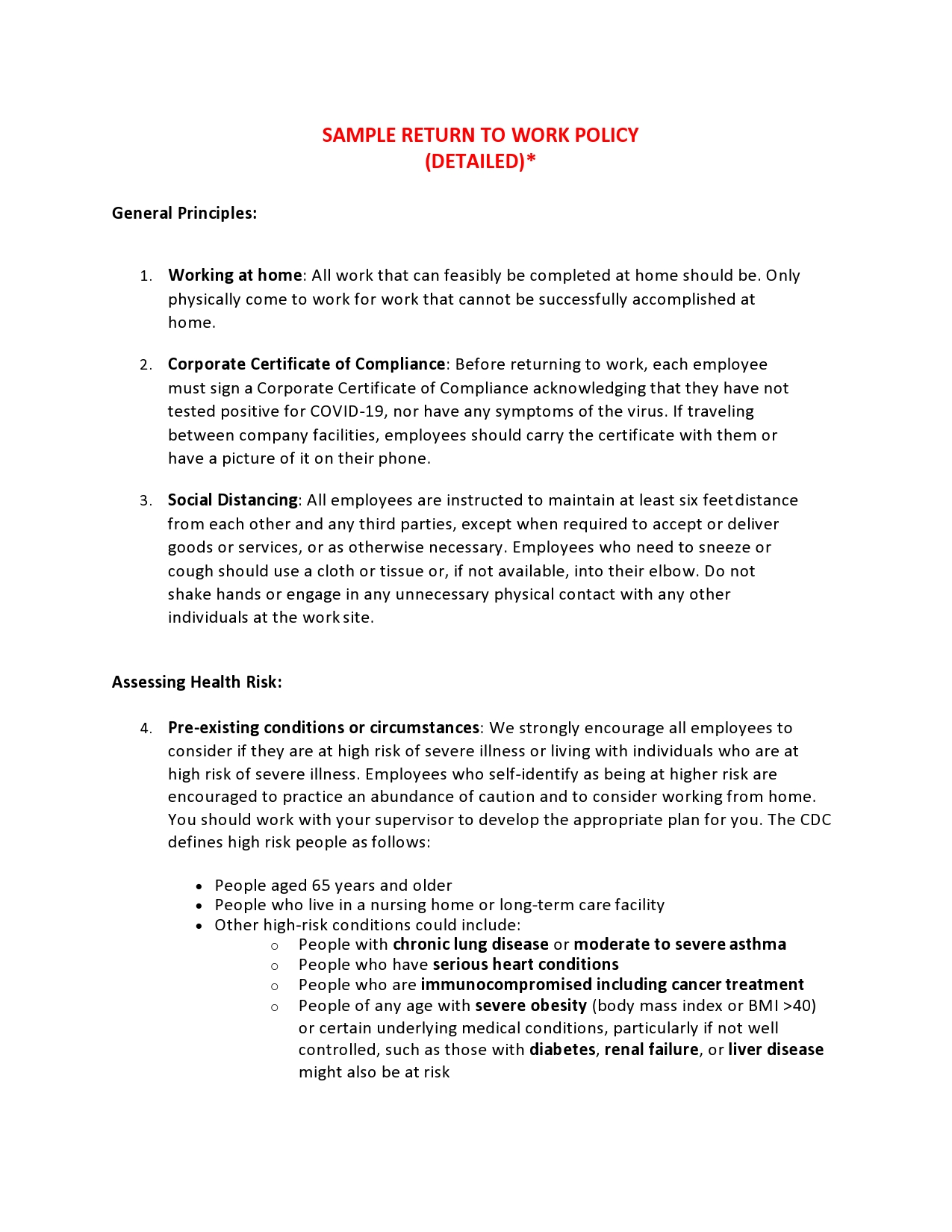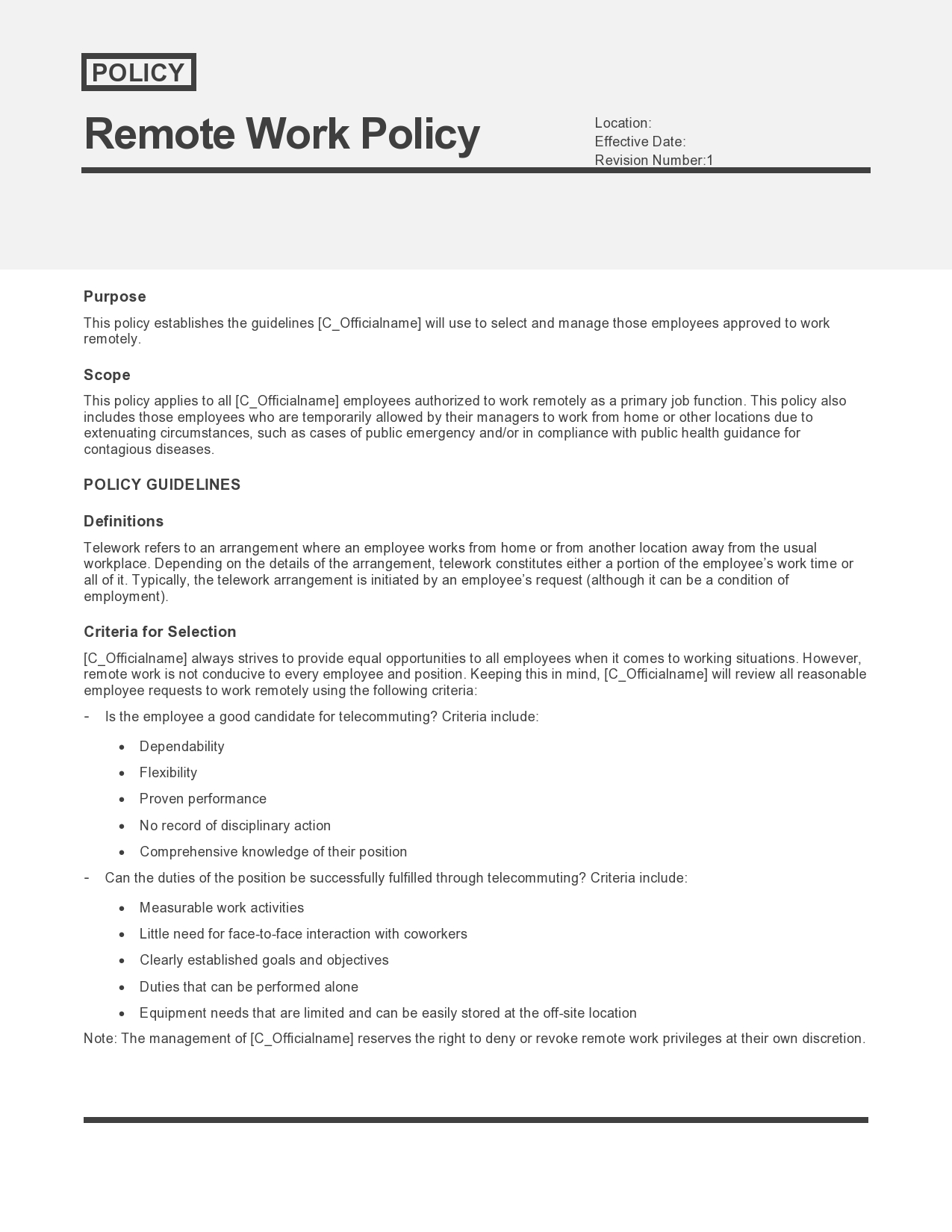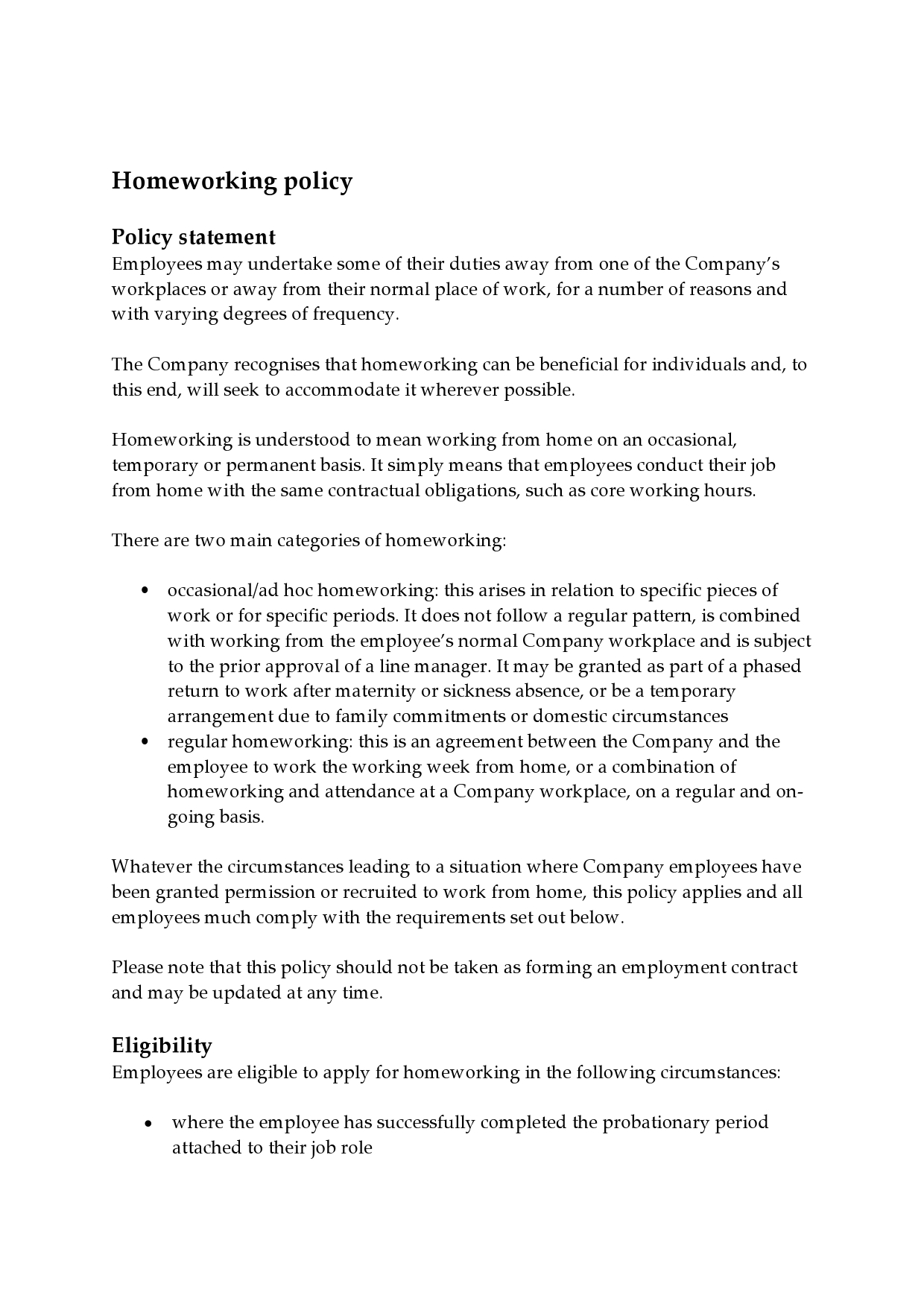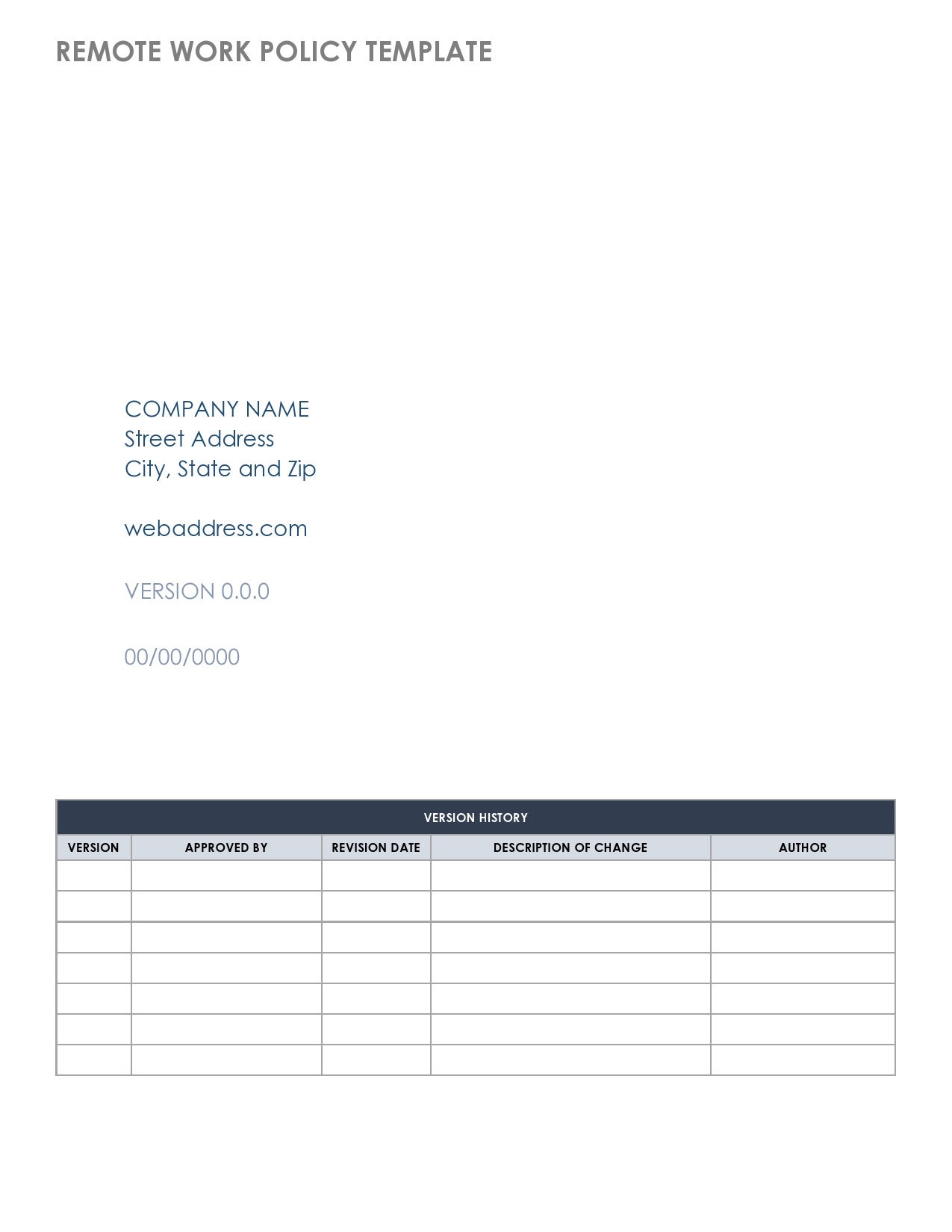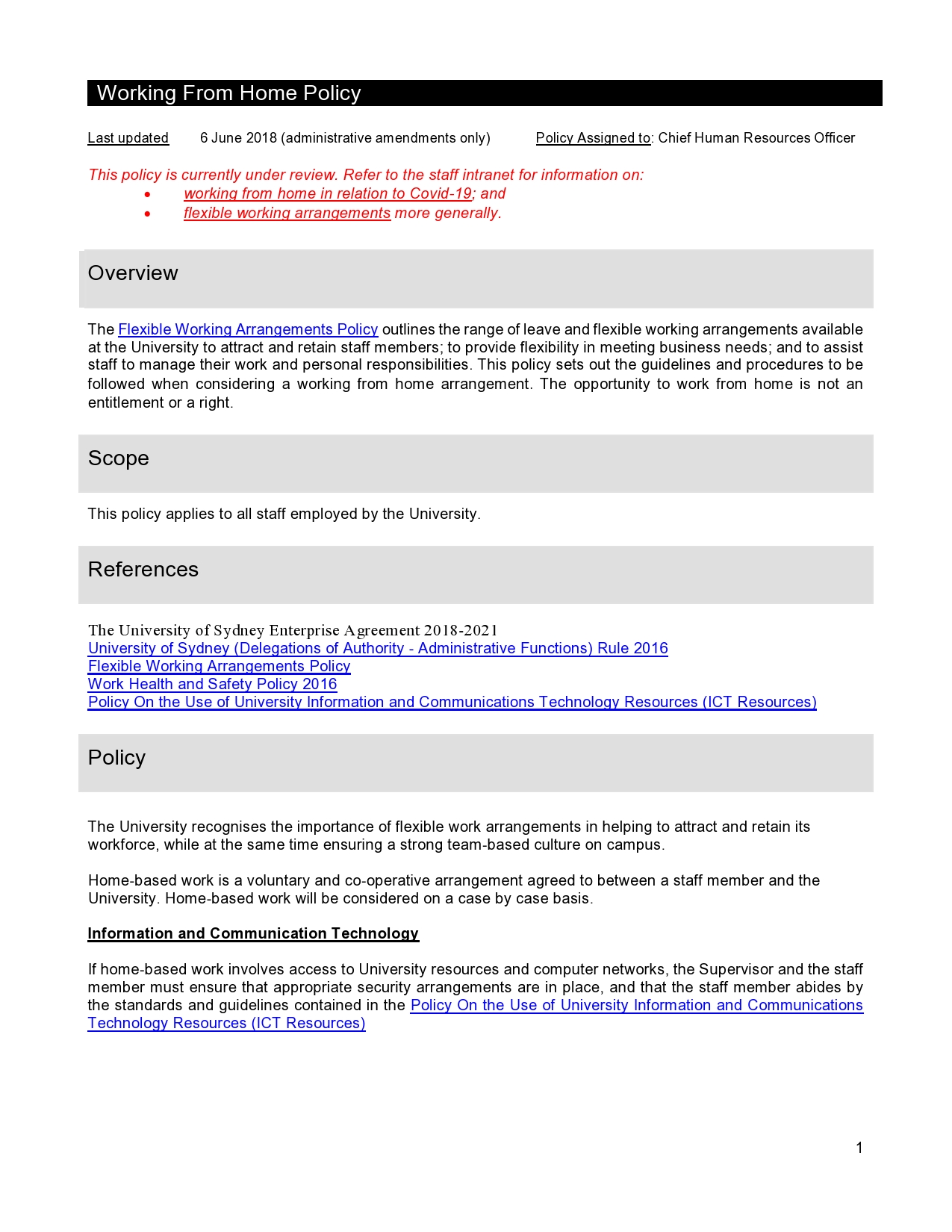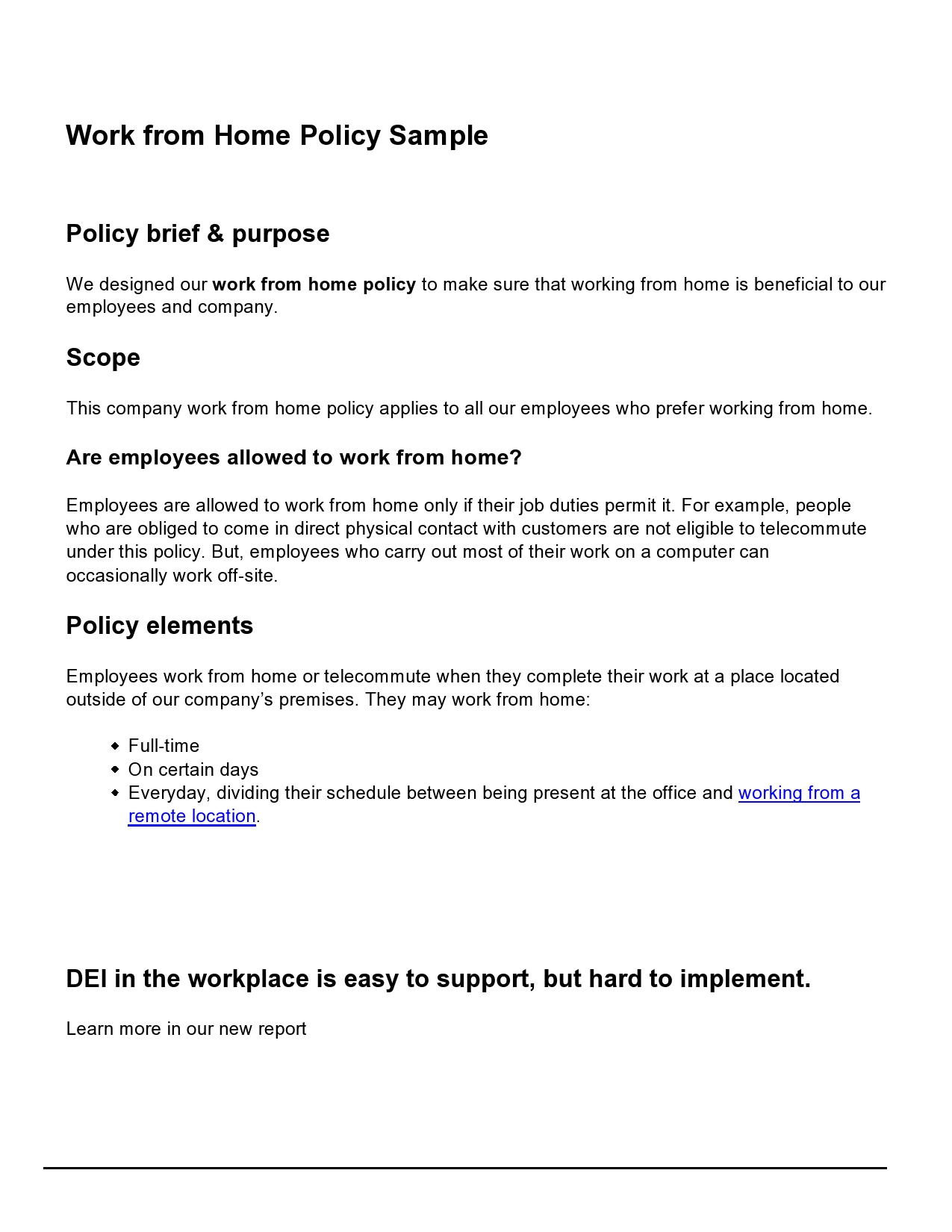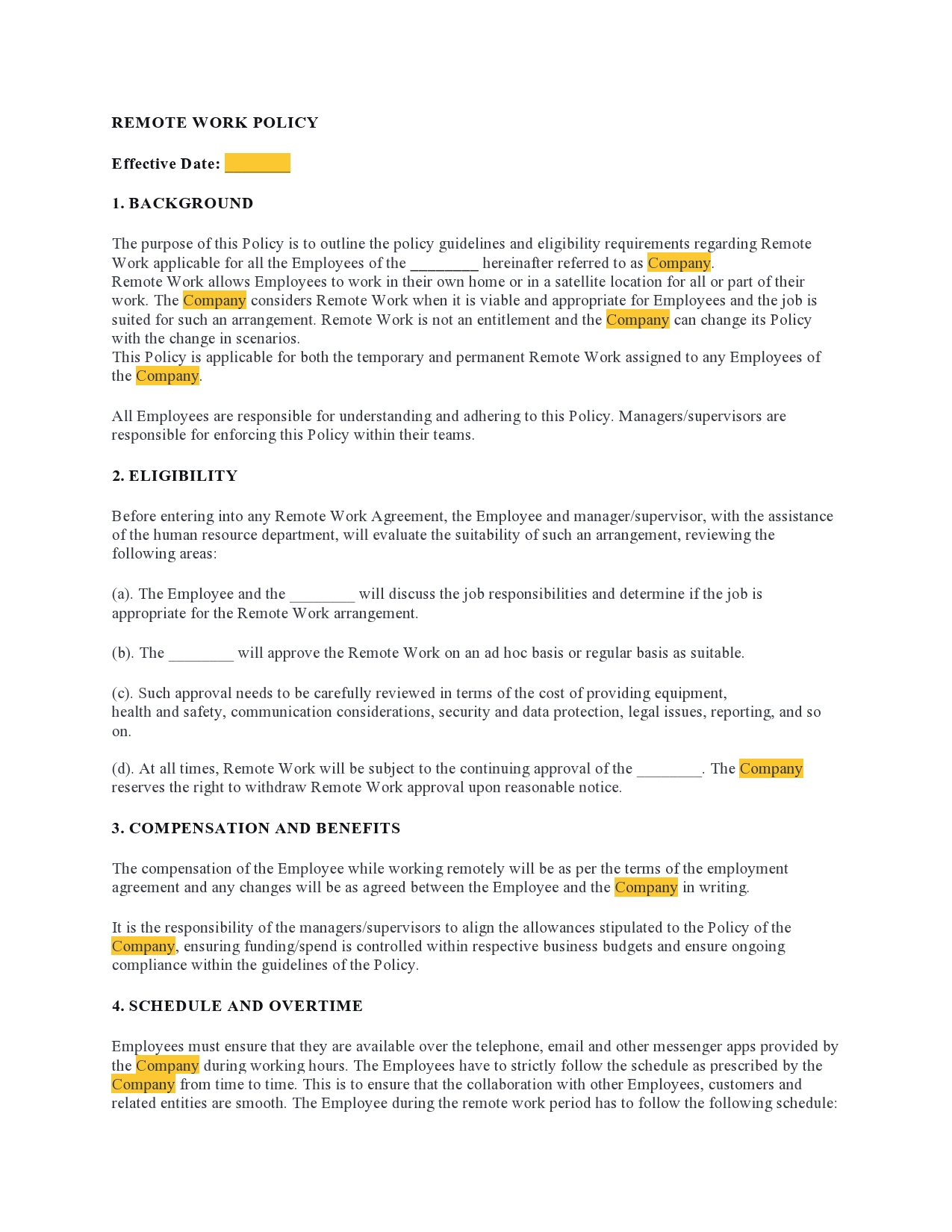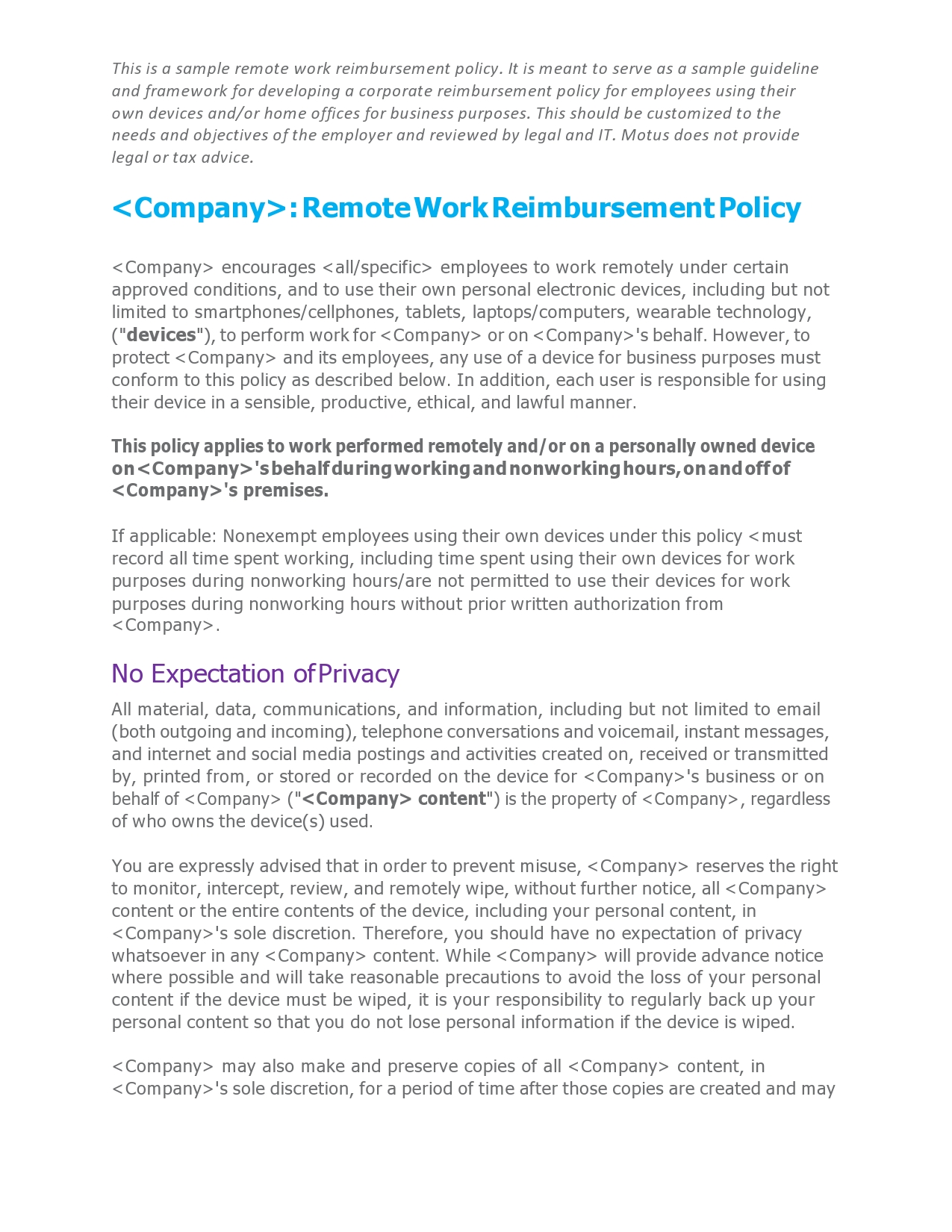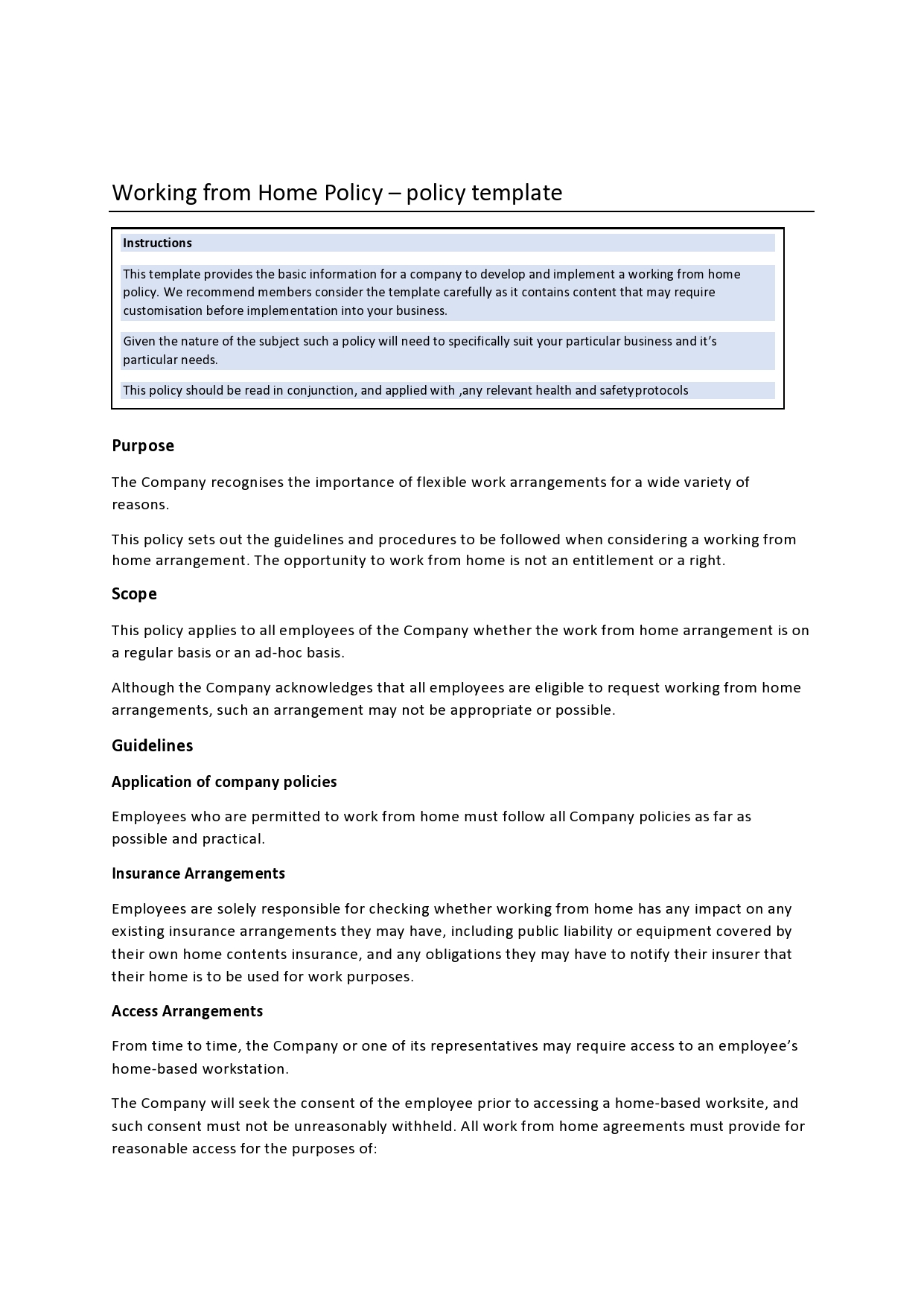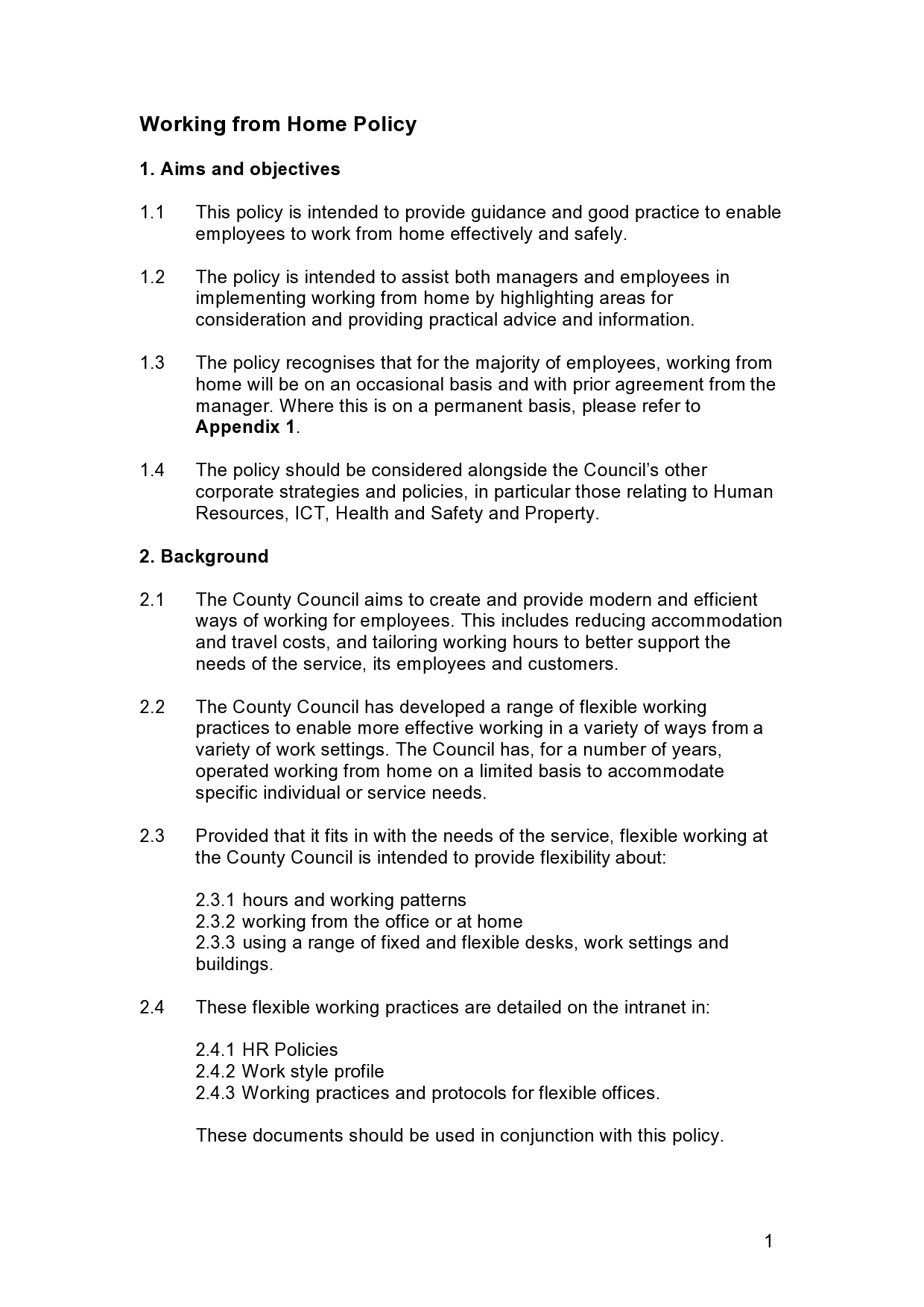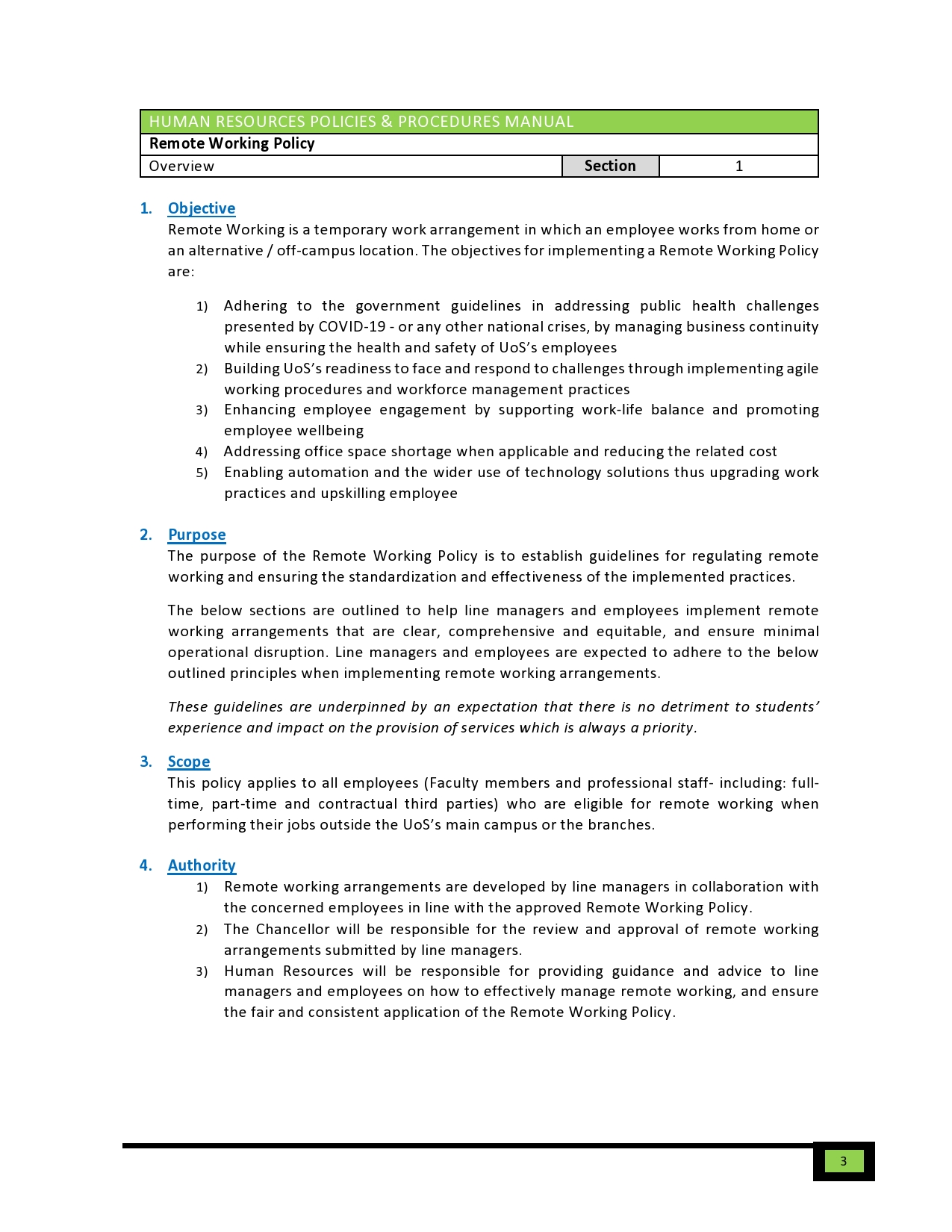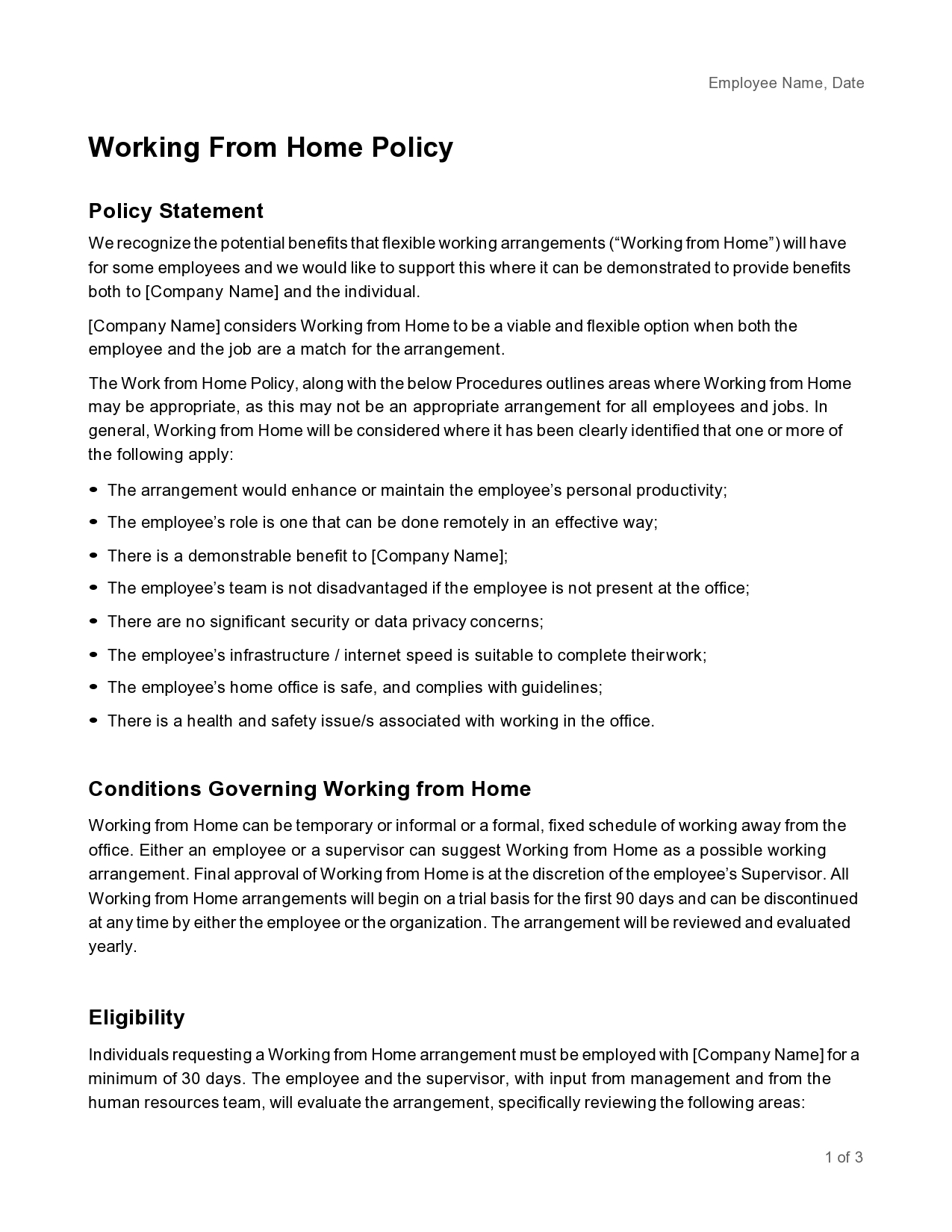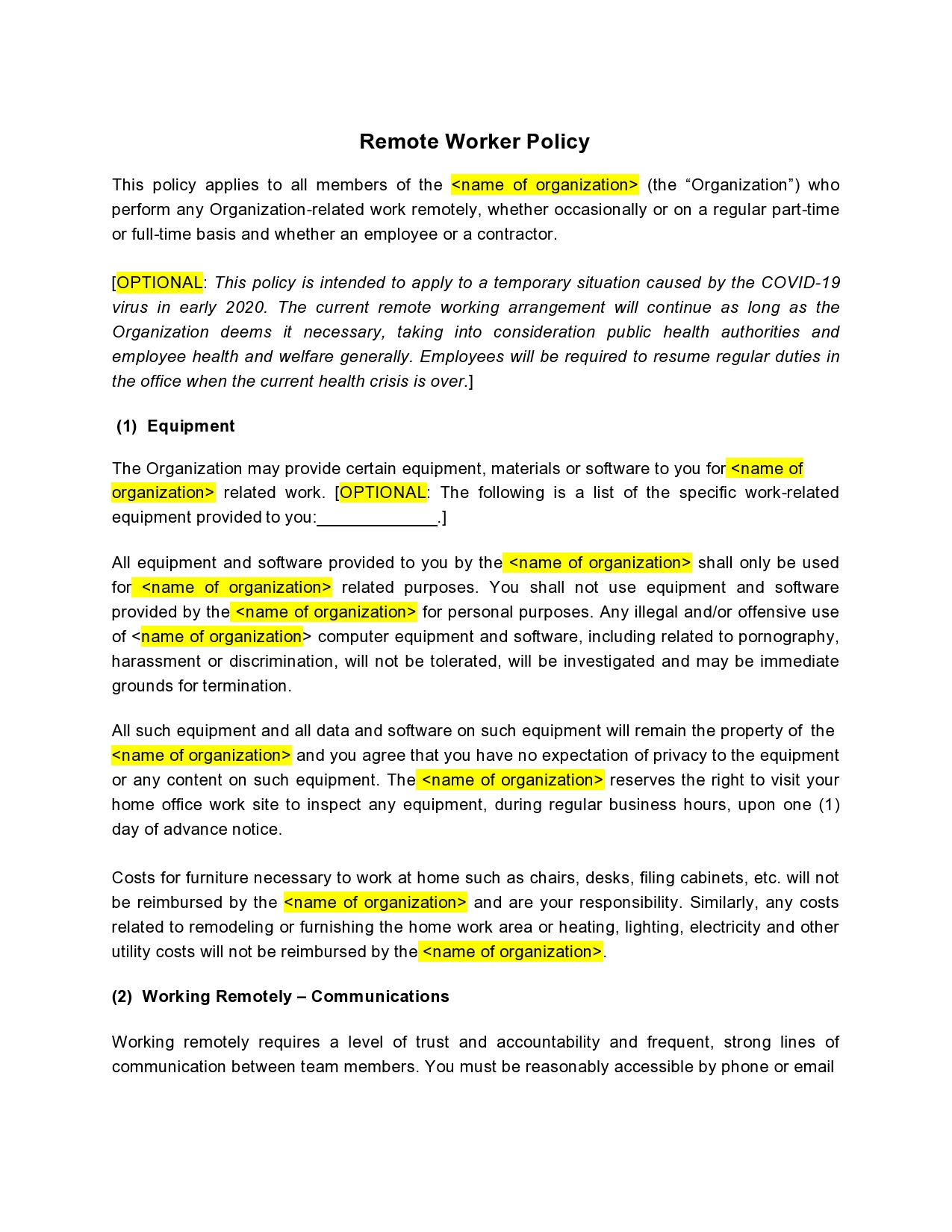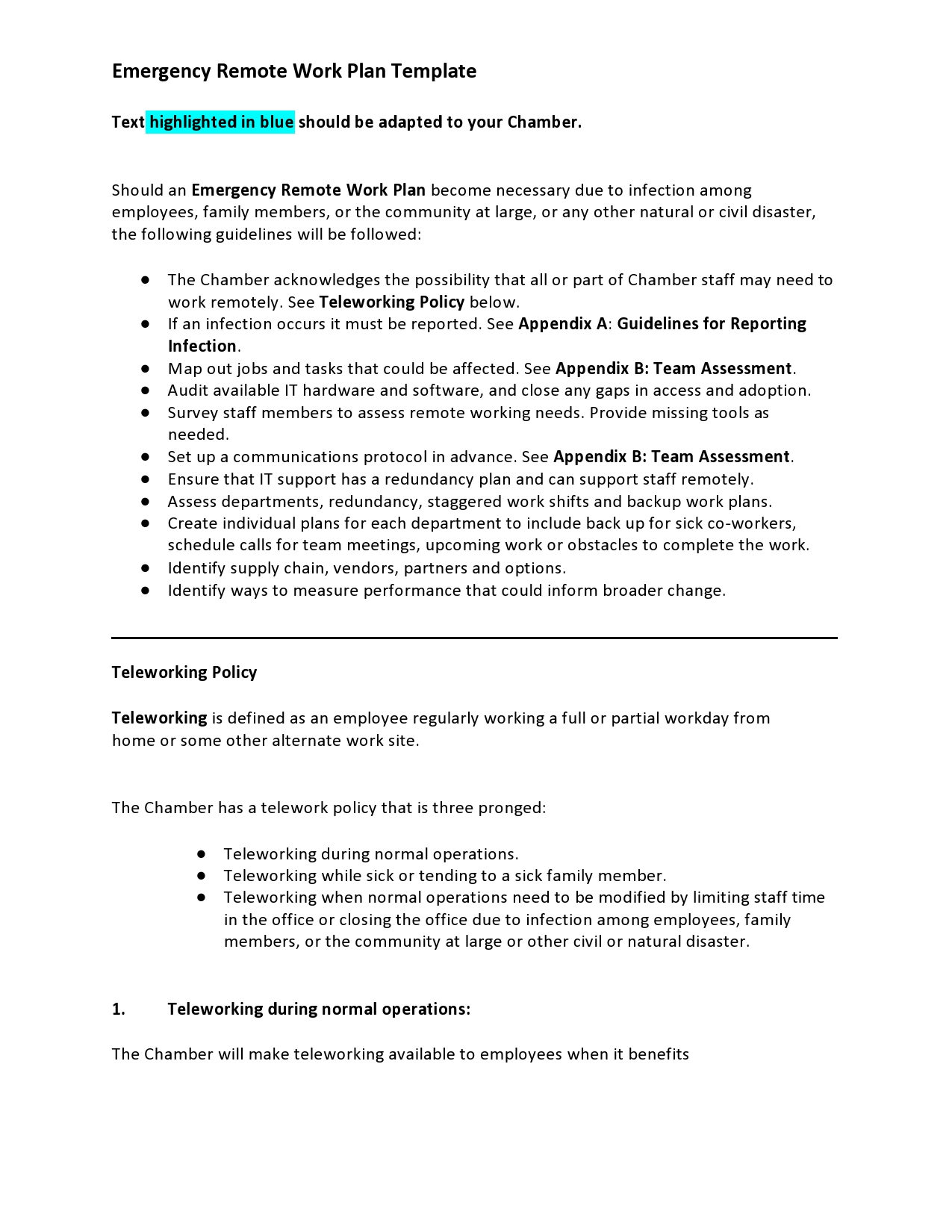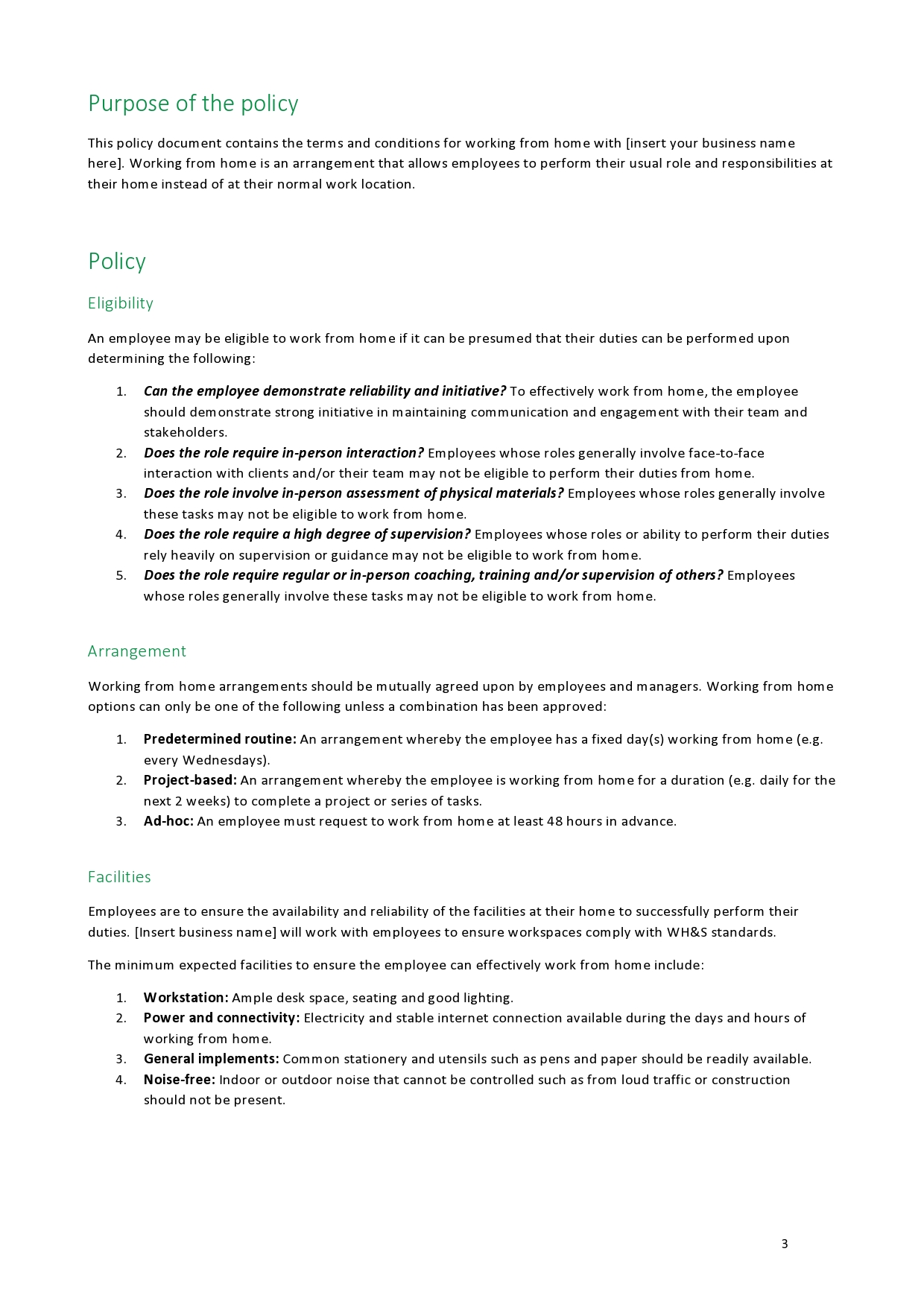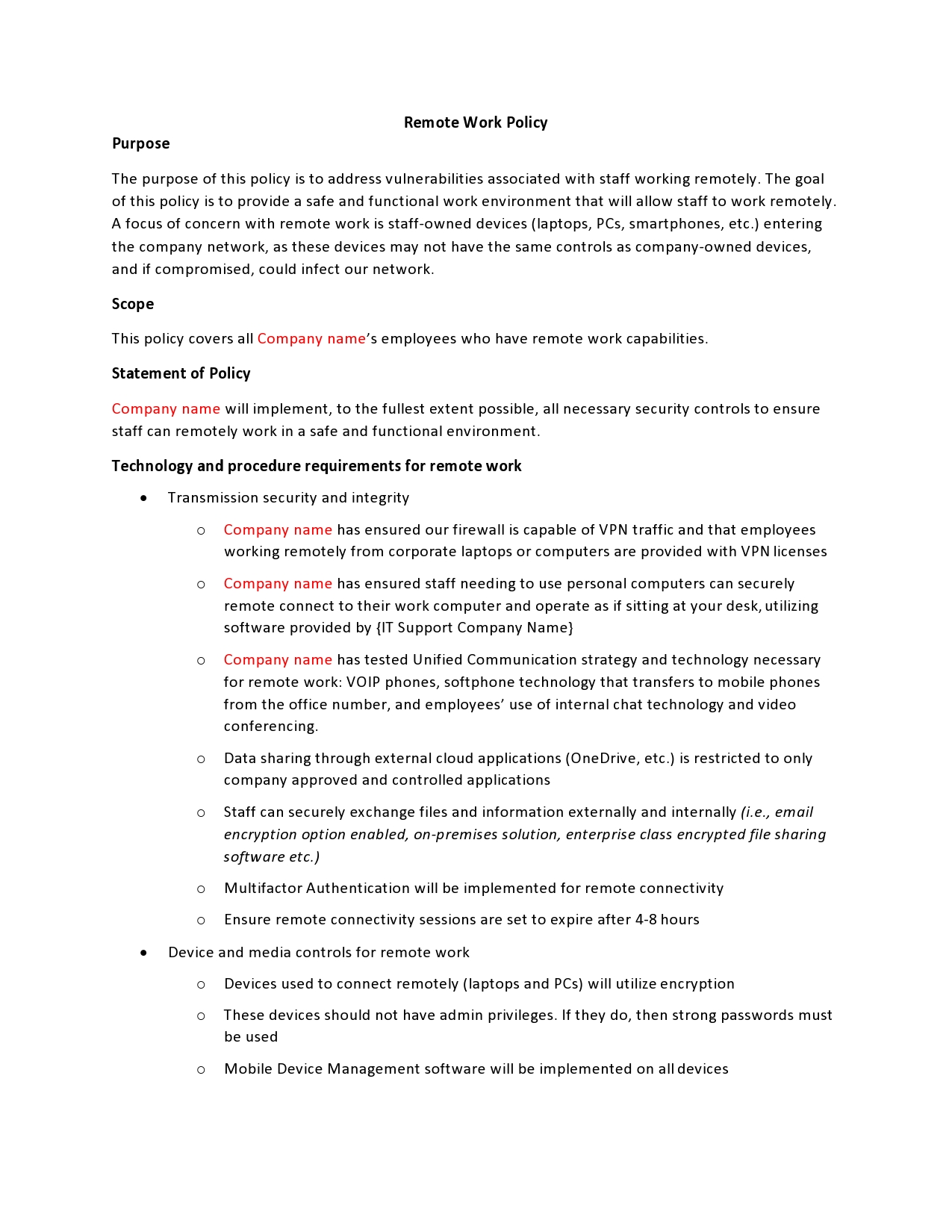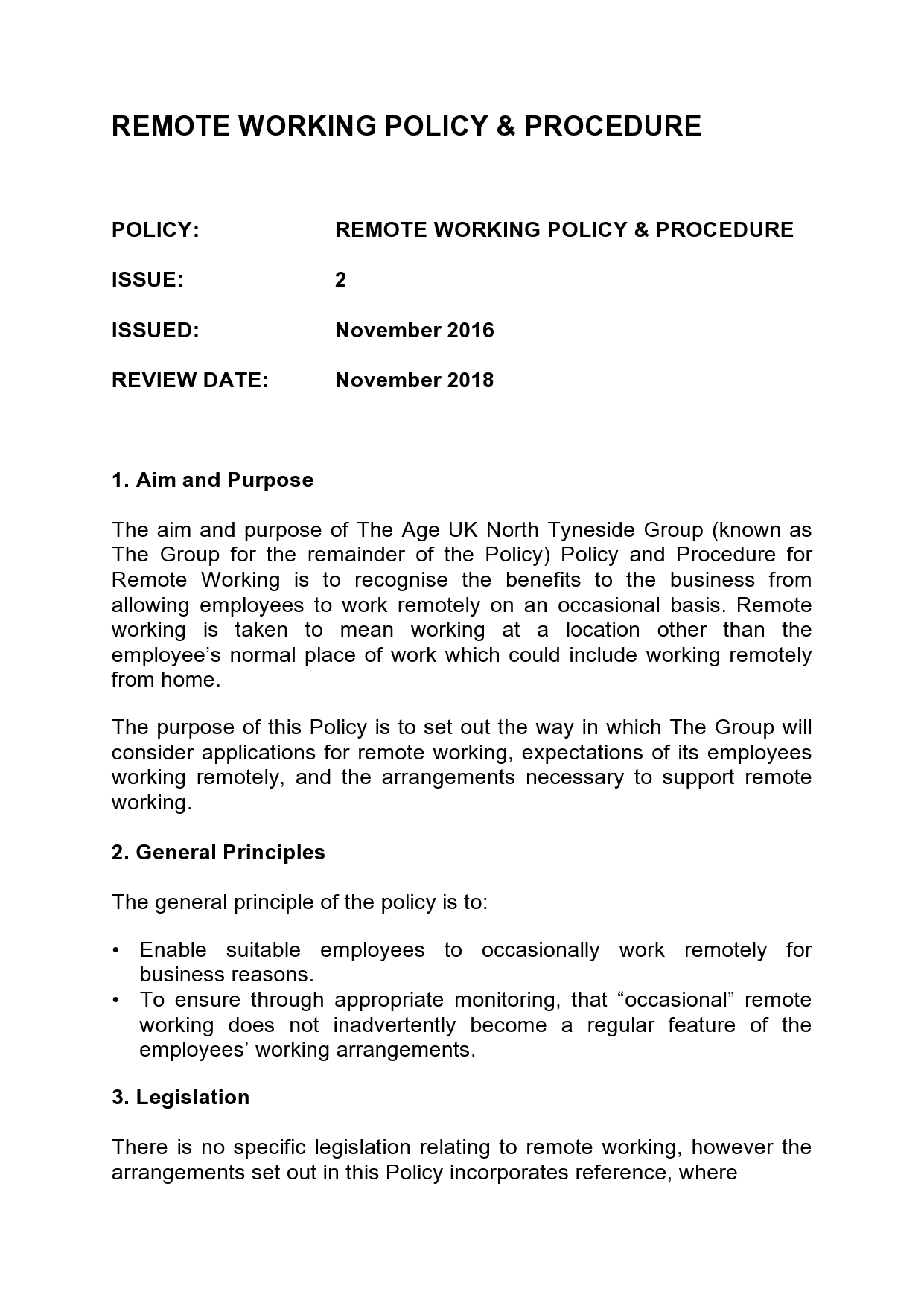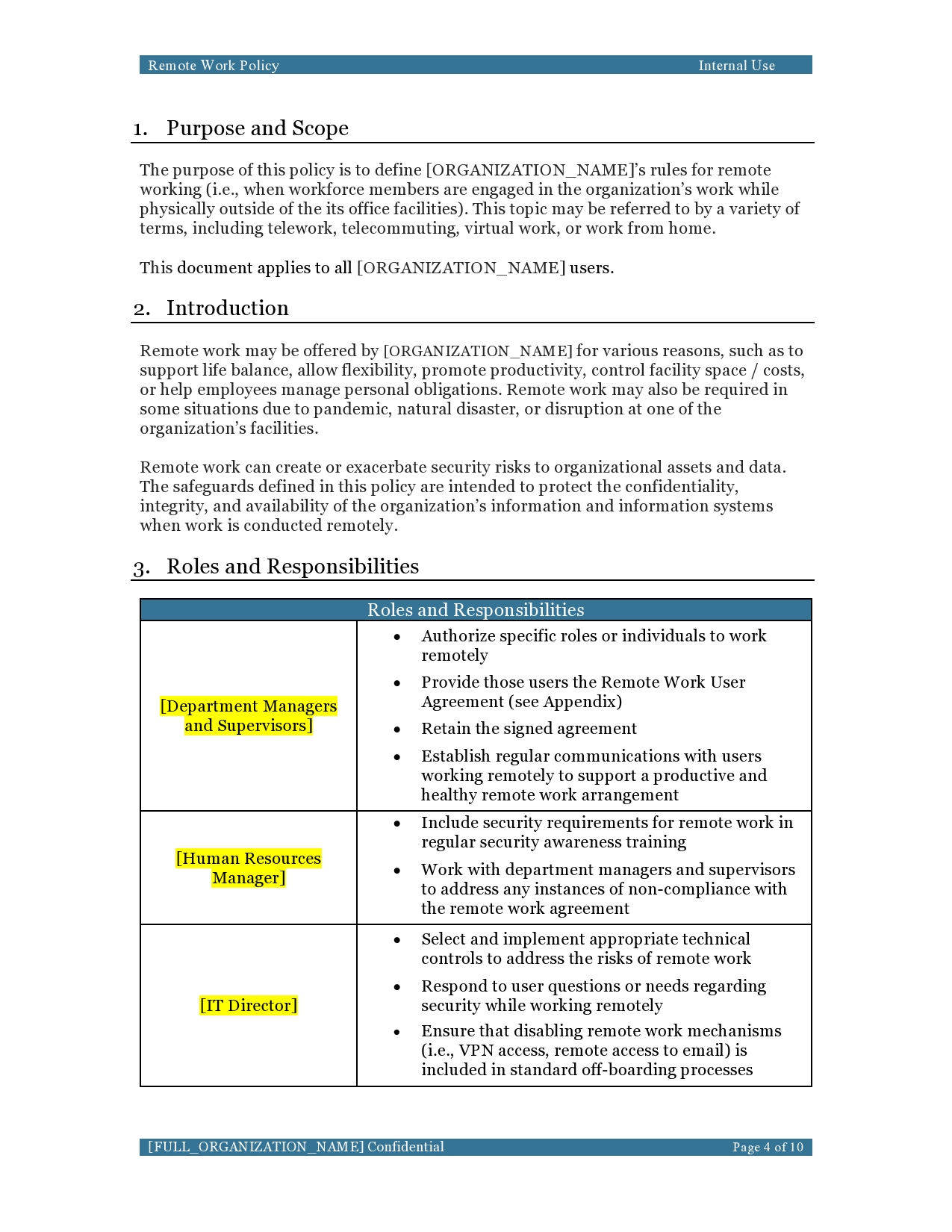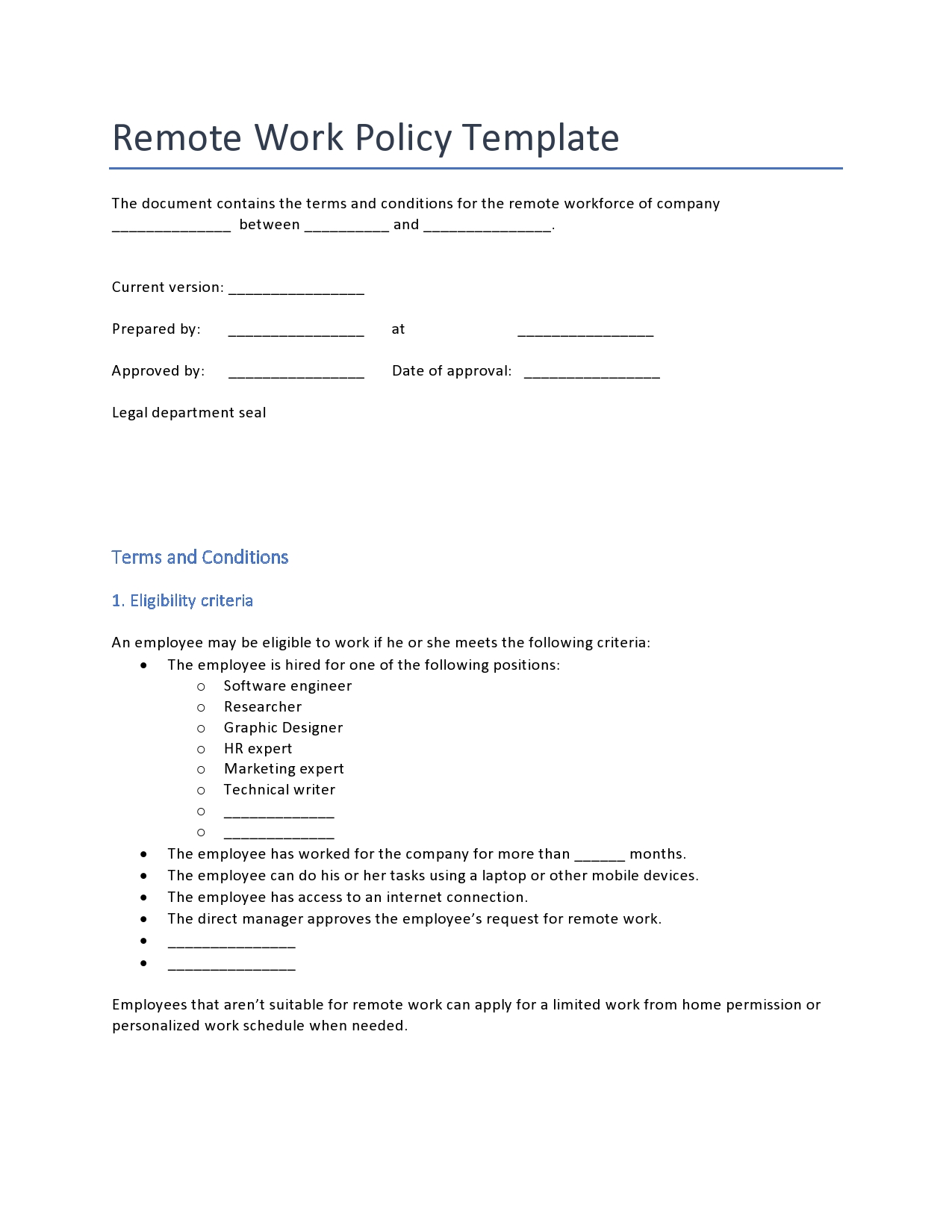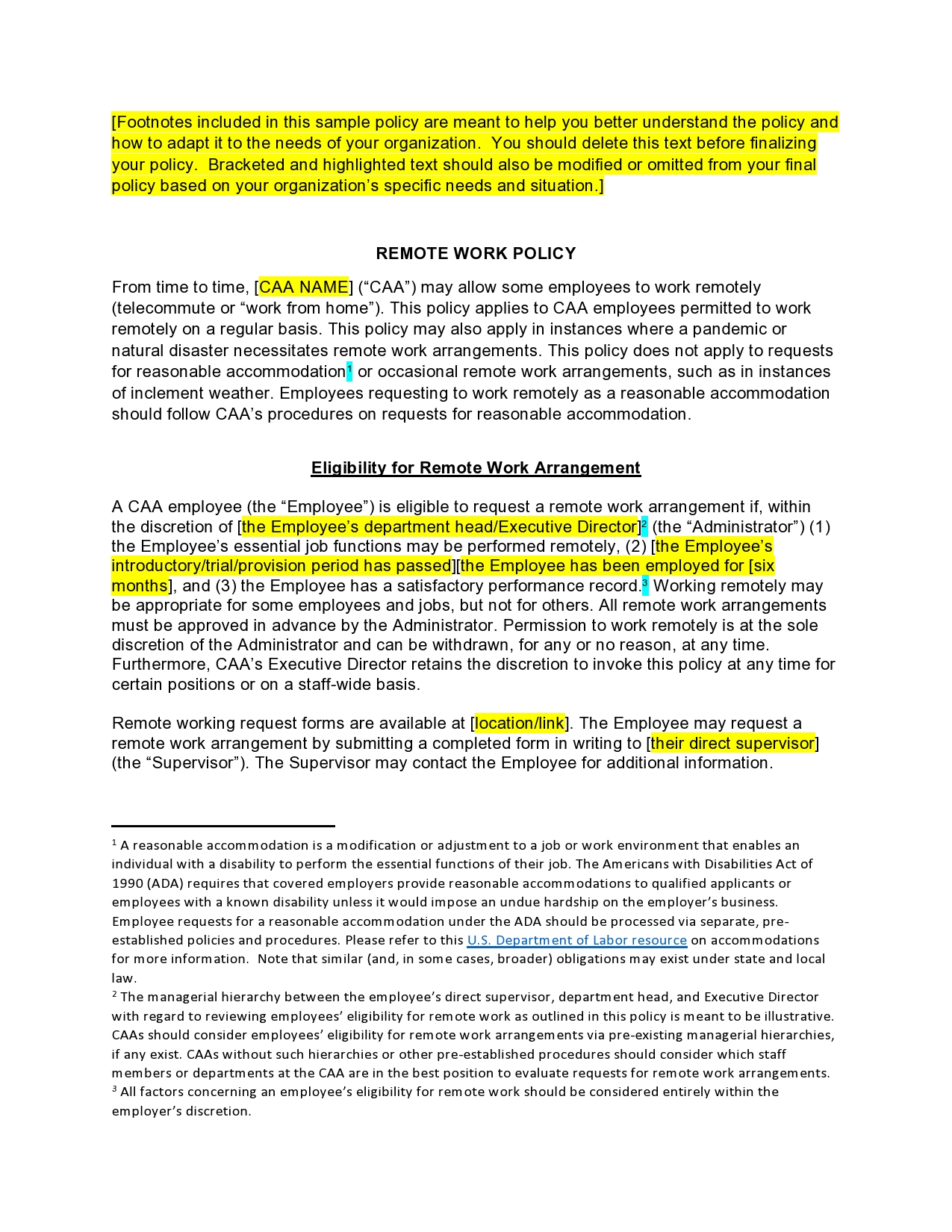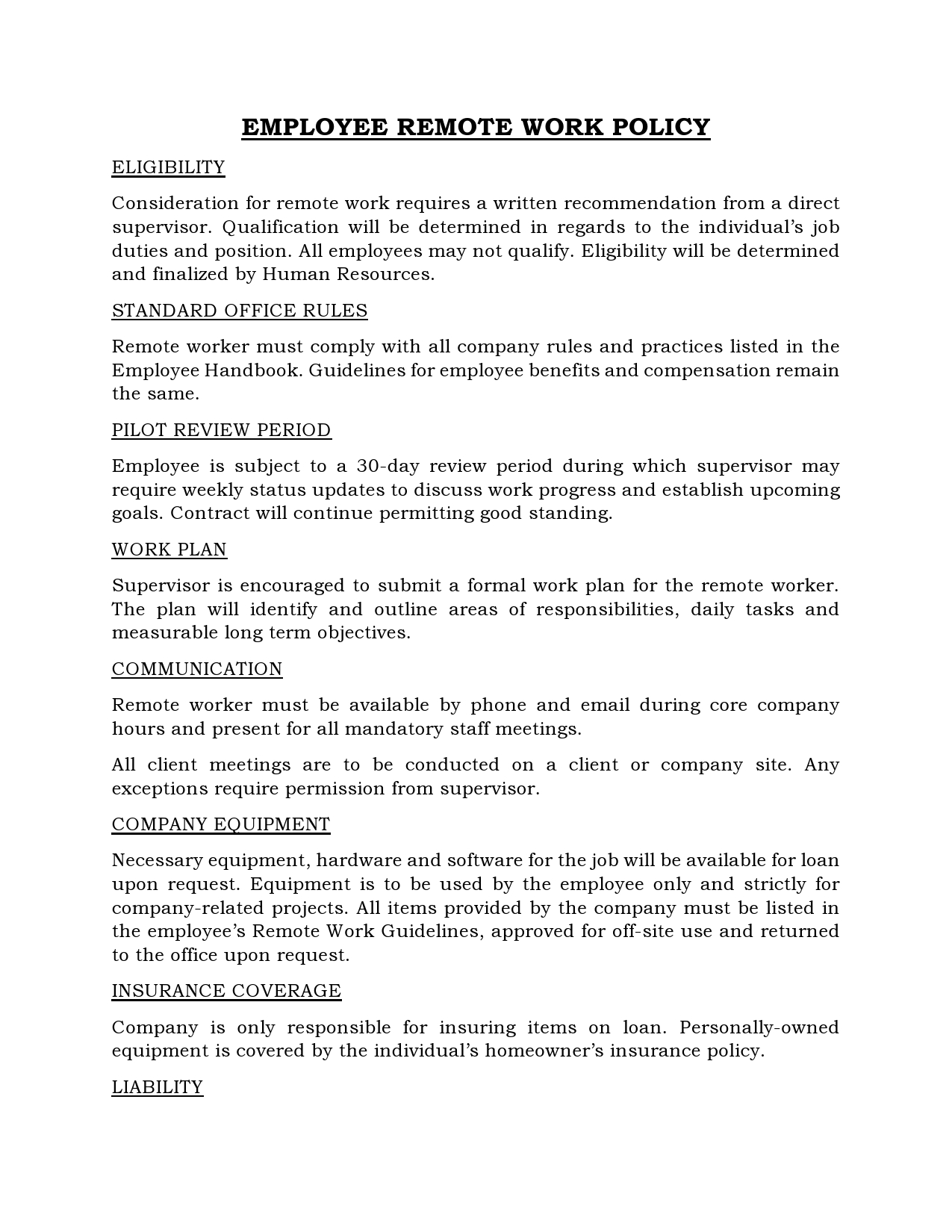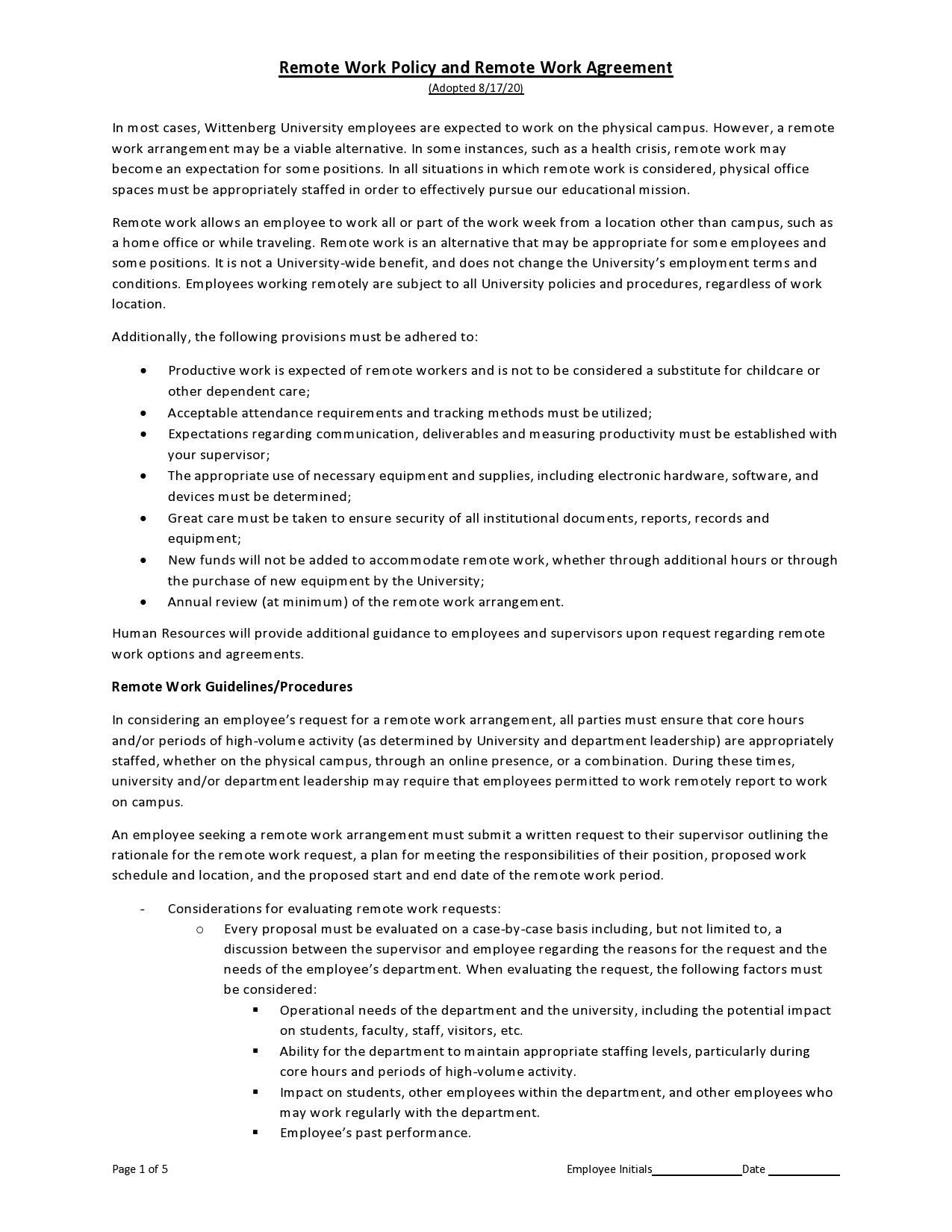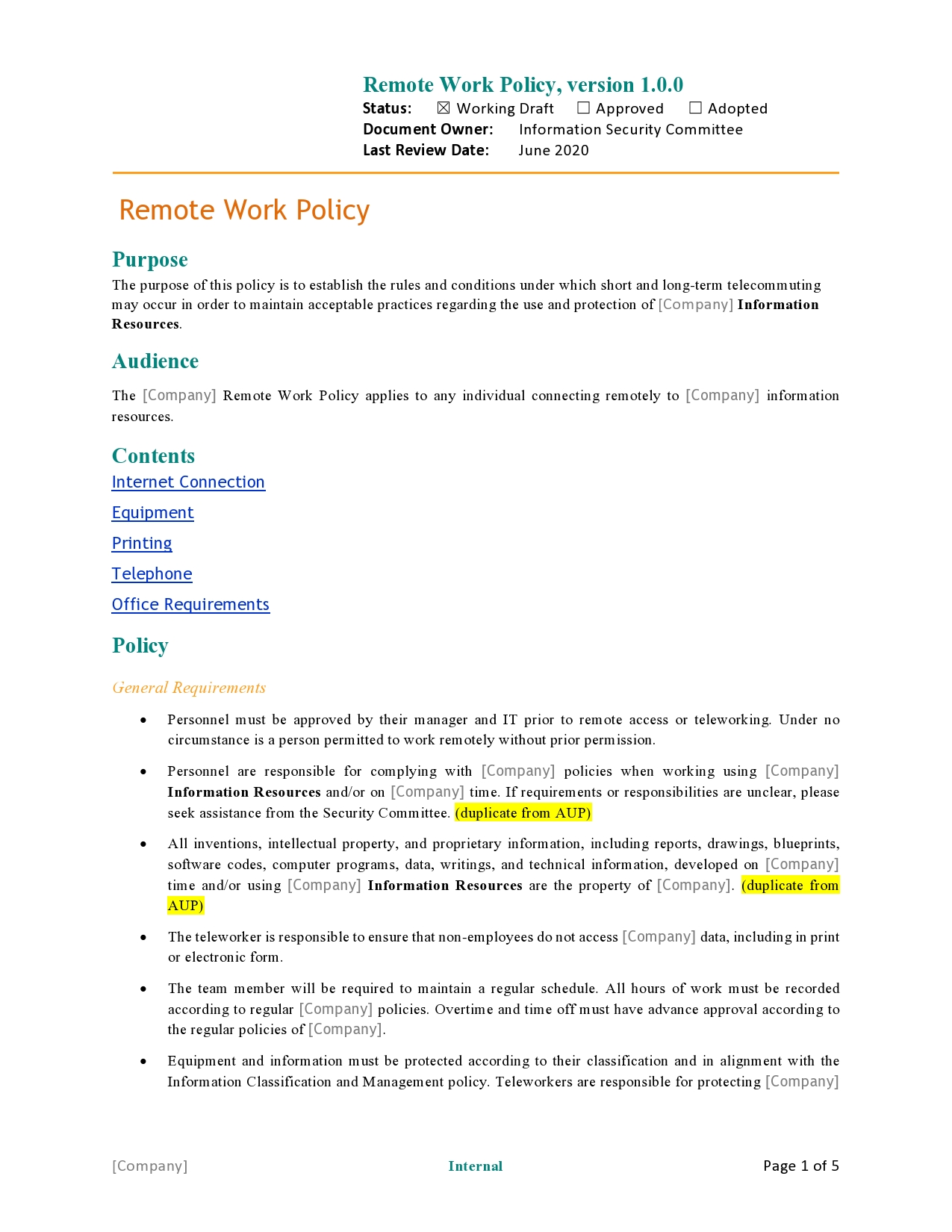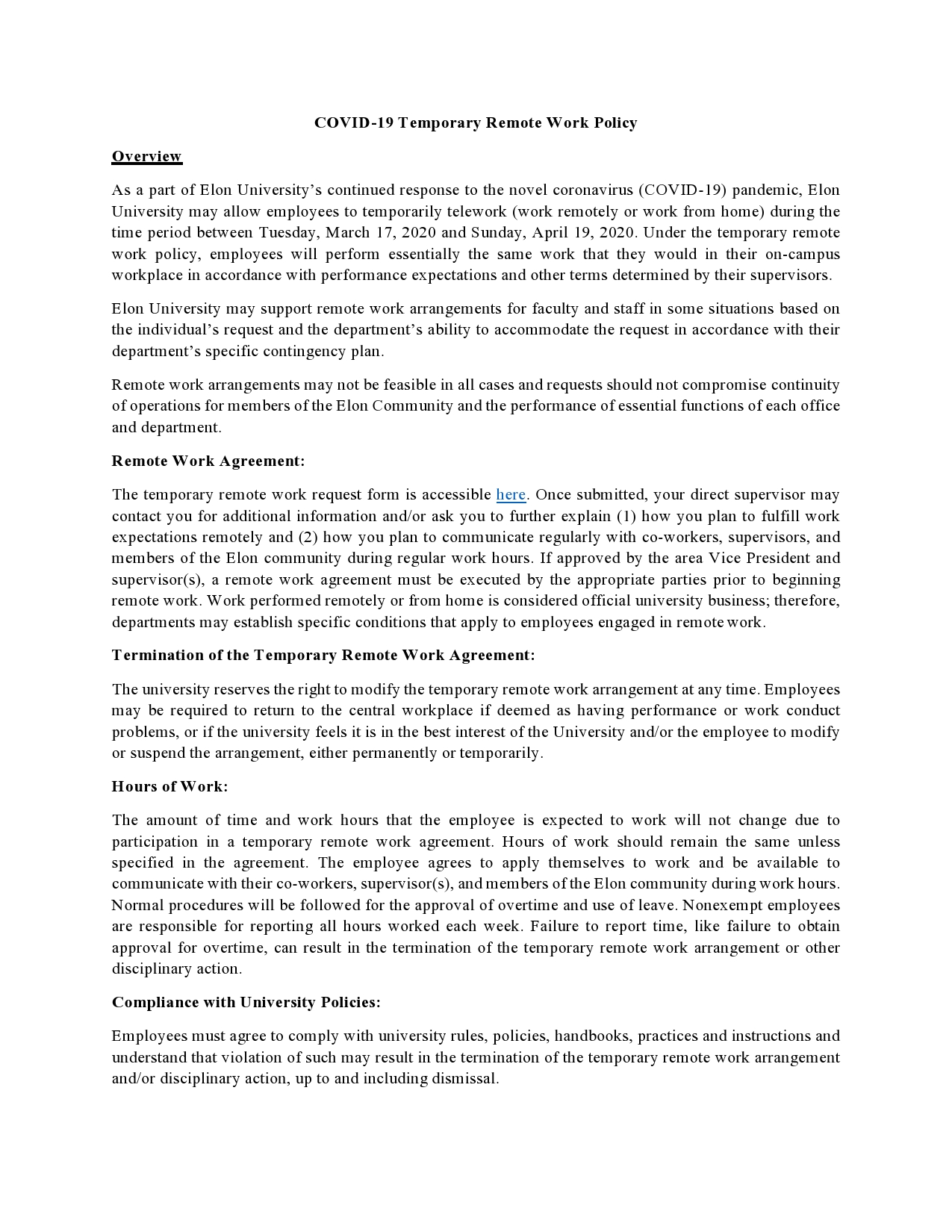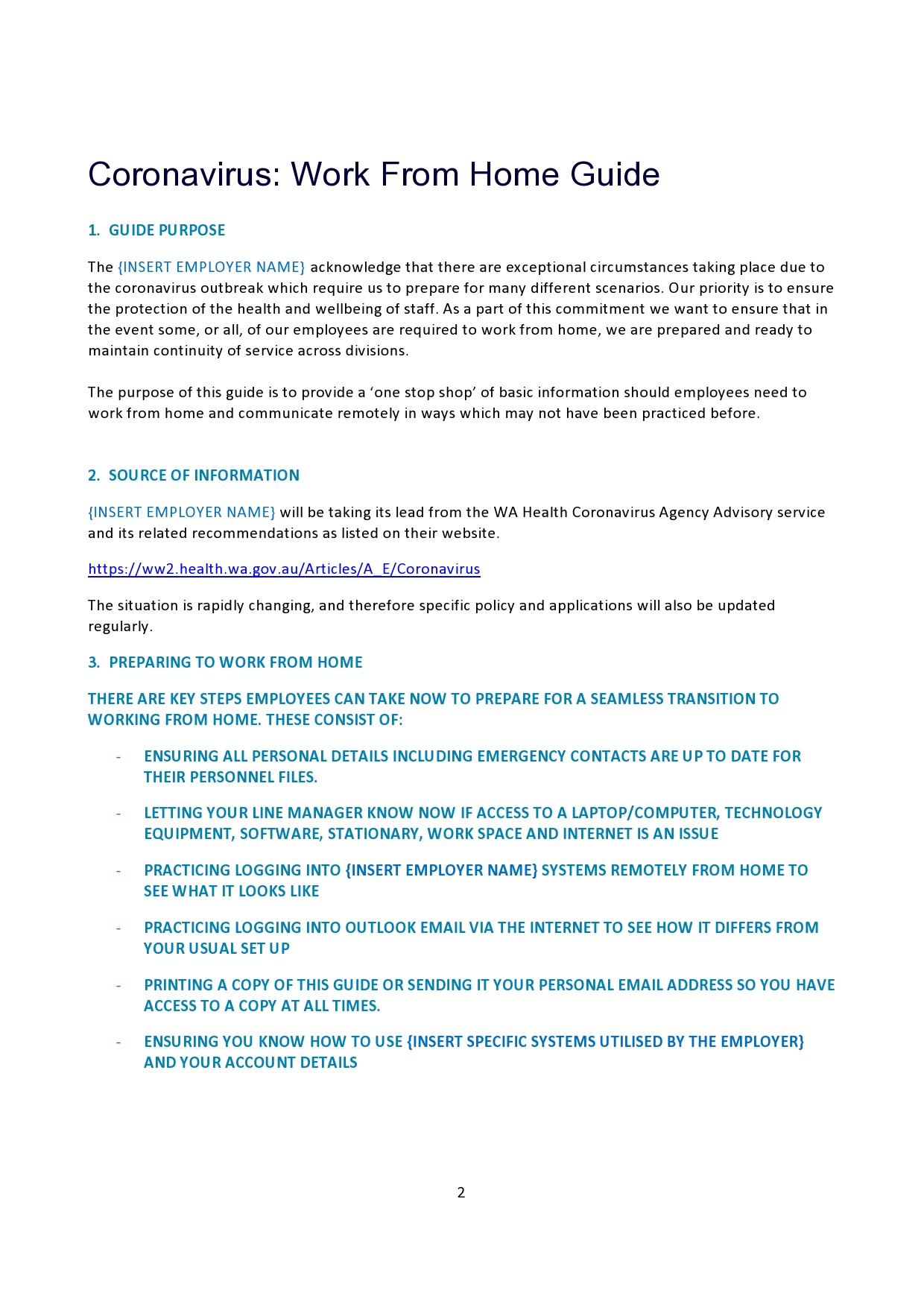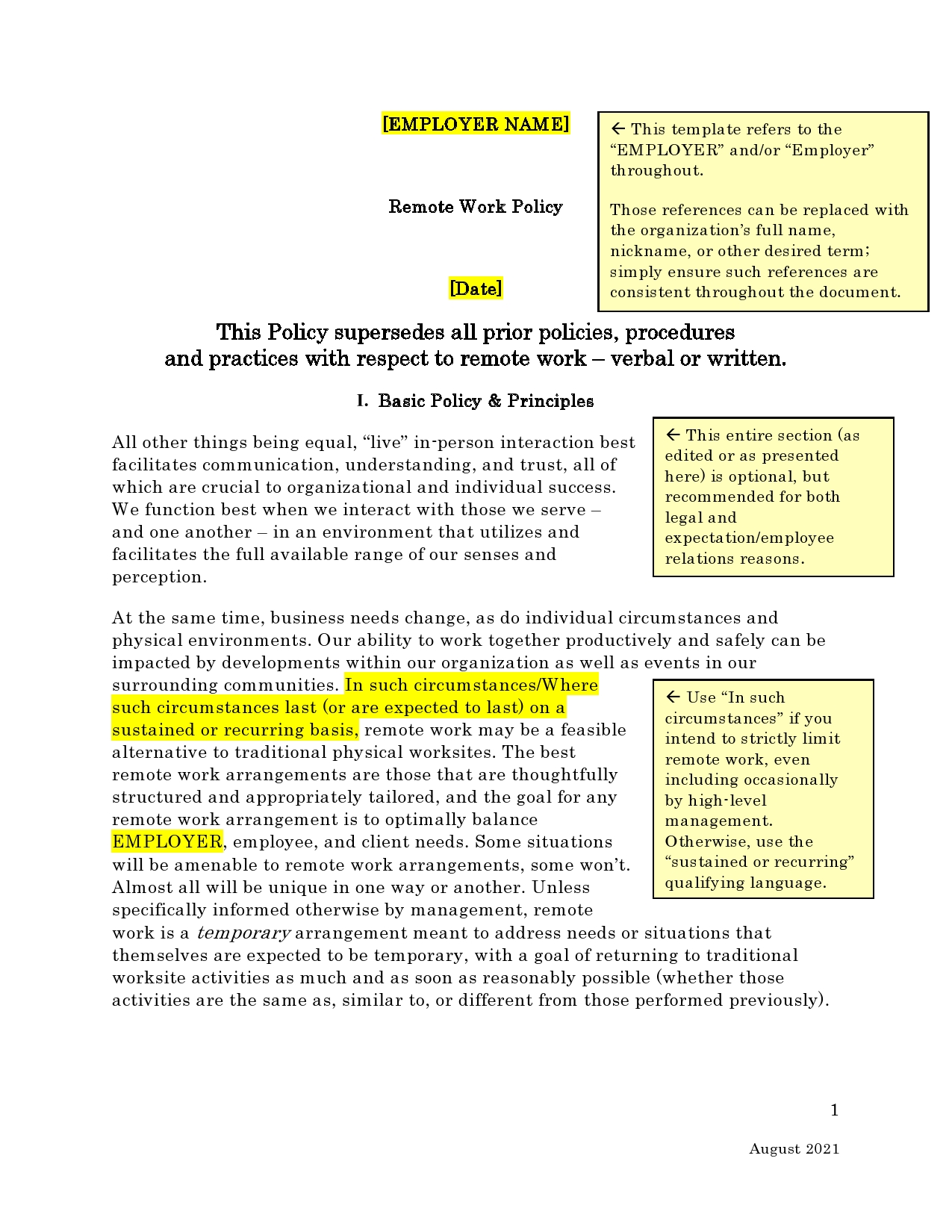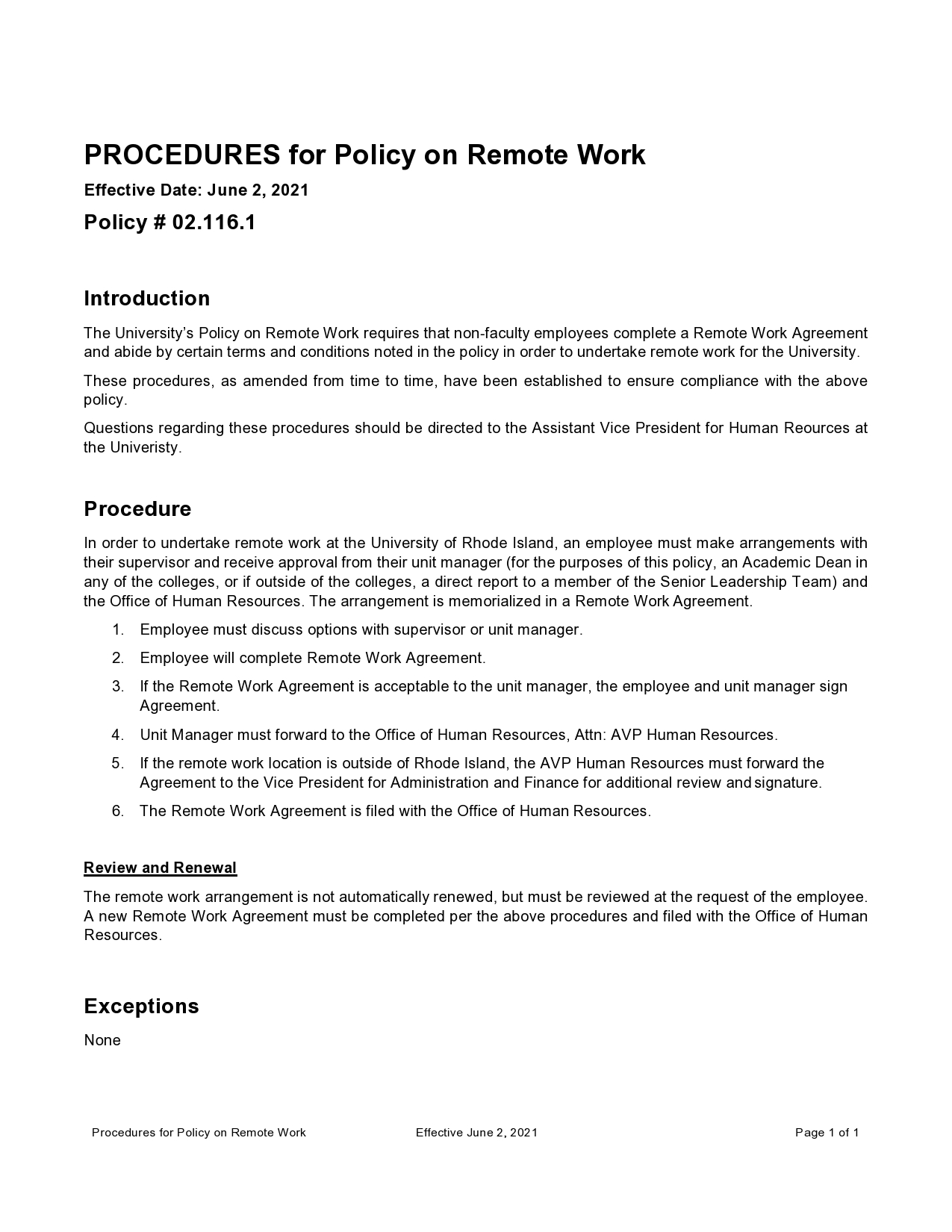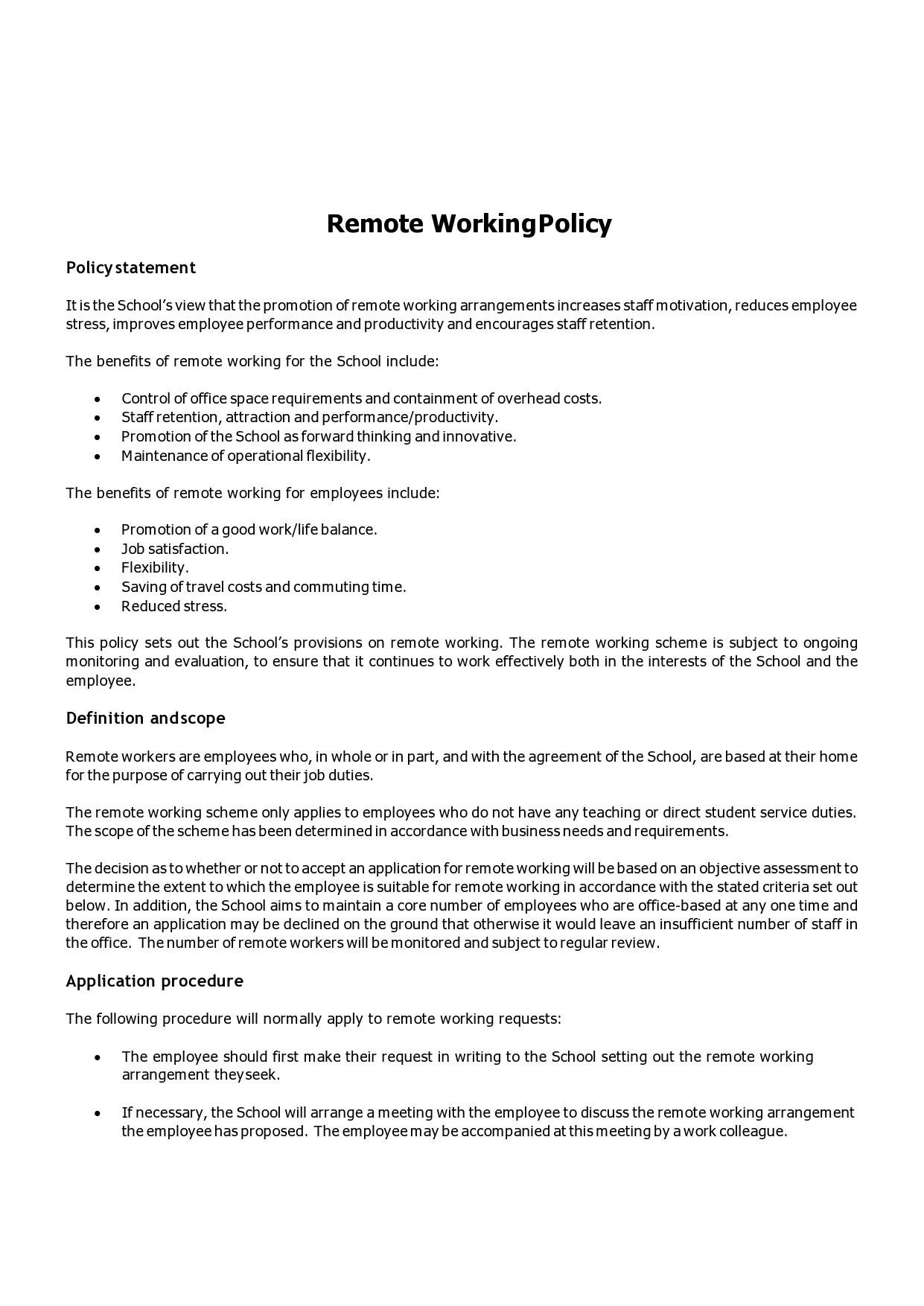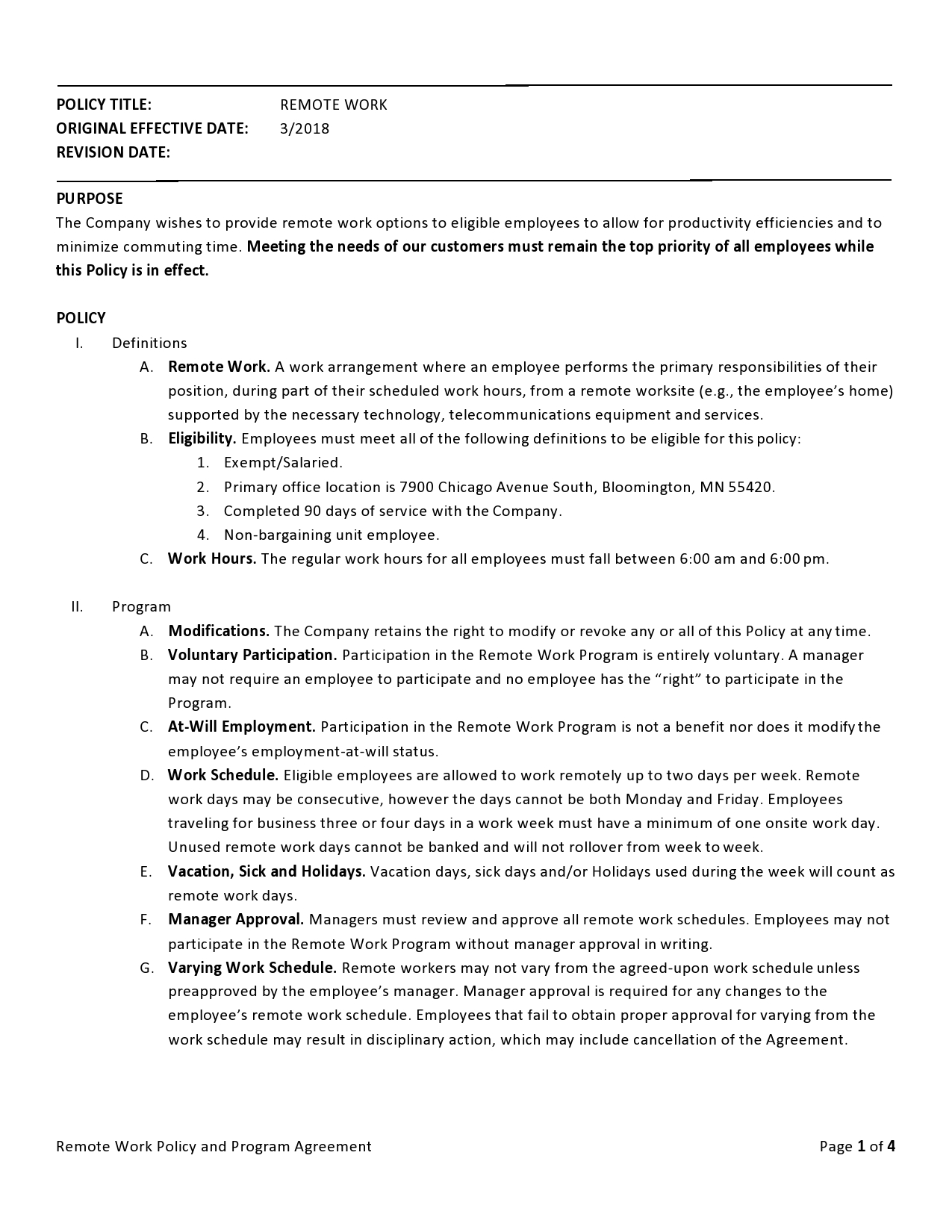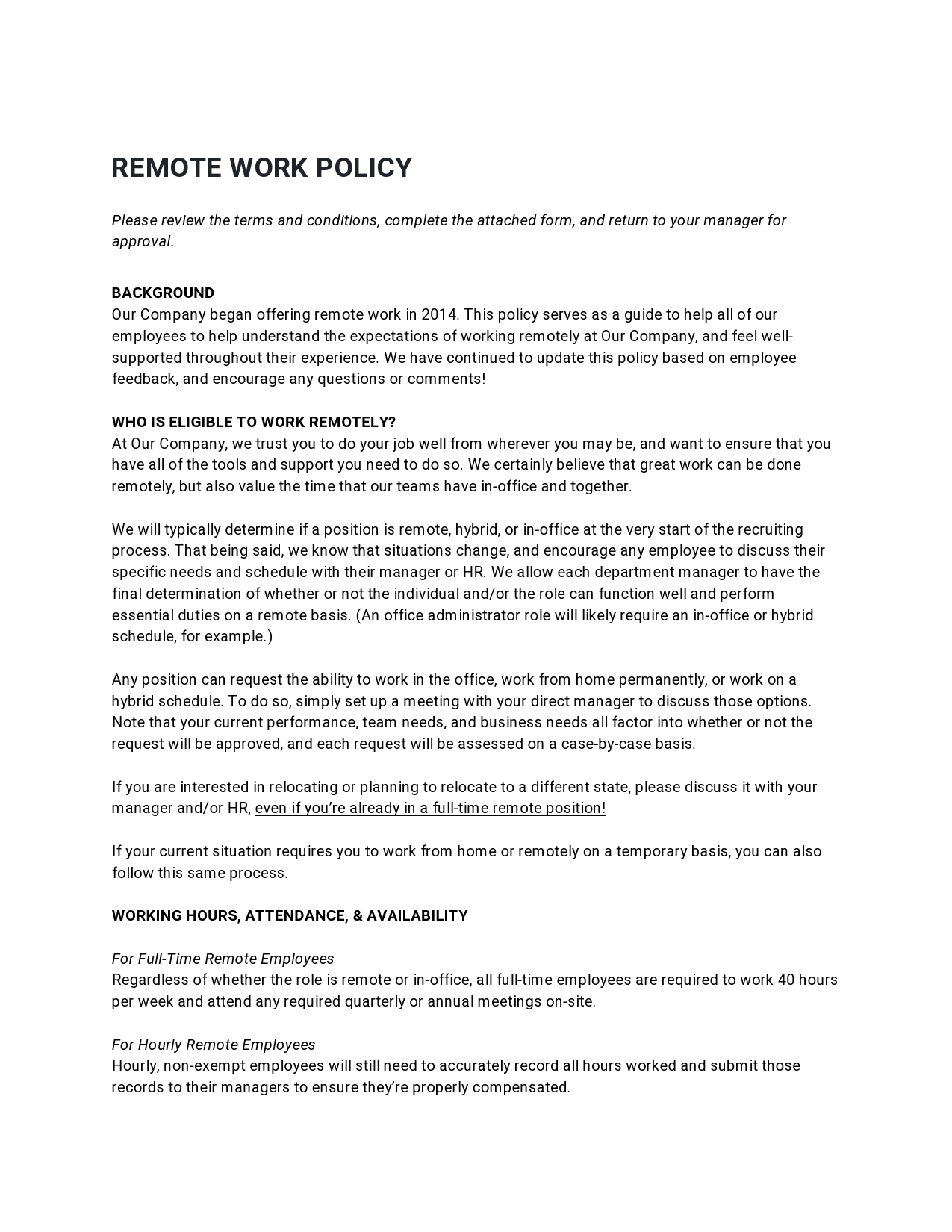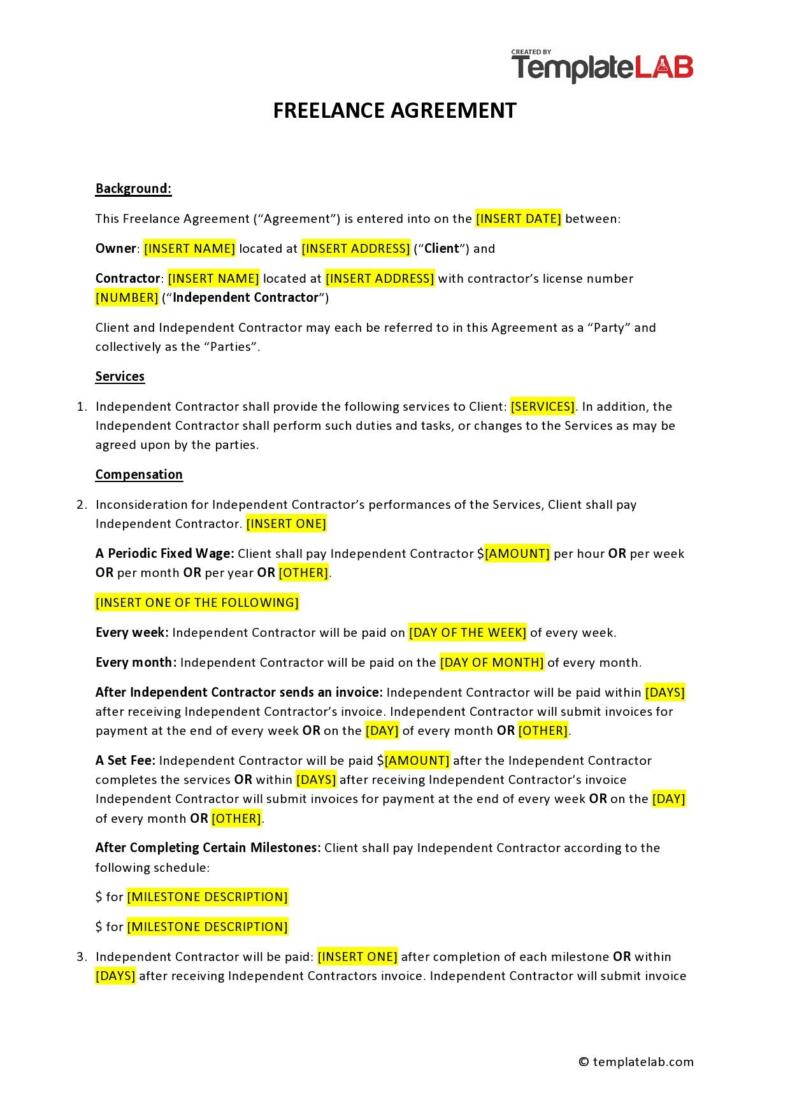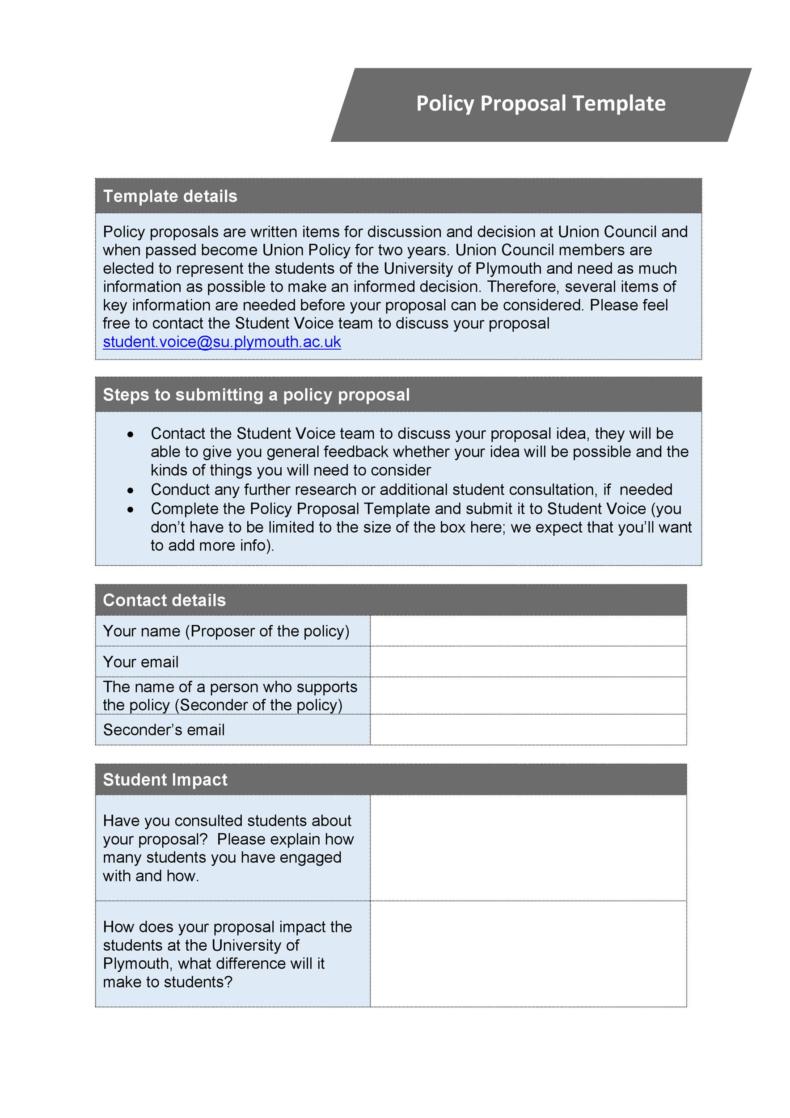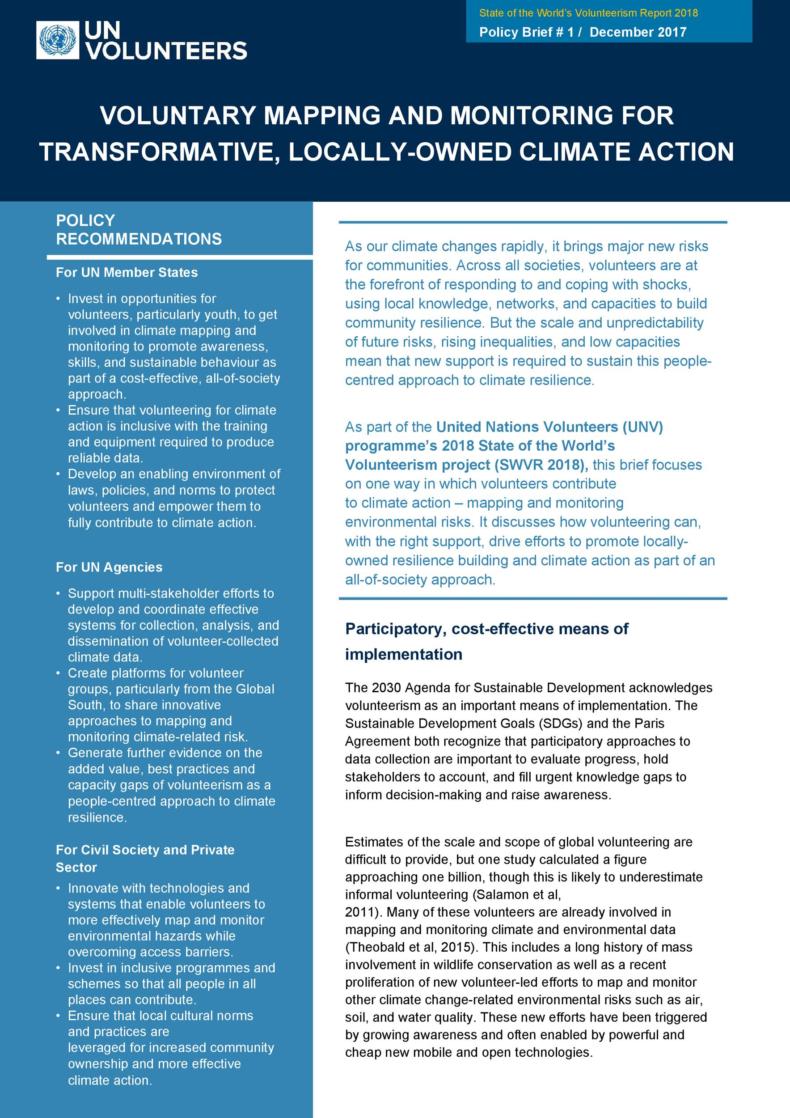If you are working to develop working from home guidelines and you need to look at a remote work policy example, this might give you some idea of what your work from home policy needs to look like. The details in every work from home policy template are likely to be specific to your business, and you might not get all the information that you need when looking at work from home policy sample.
When developing working from home rules, you need to be sure that you are matching industry standards and also protecting your company from having issues to do with employee behavior. Employees who are responsible and care about your WFH rules cannot exist without a good work from home policy that can be clearly conveyed to your staff.
Table of Contents
Work From Home Policy Templates
What are workers’ responsibilities when working from home?
Workers who are not coming into the office every day need to be sure to uphold company values, despite working from home. Some companies require that everyone be dressed for work if they are going to be interfacing with customers through view chats, and there might need to be rules about the way that people are addressed online as well. Company chats can get very informal, which can lead to communication breakdowns and problems with clients.
Most companies will say that the bare minimum requirements for employees working from home are:
- Showing up on time
- Being polite and professional to clients as well as peers
- Putting in the full expected hours for their job
- Being available when the phone rings for questions or job-related tasks
- Being online during their stated working hours
These expectations might be more or less flexible depending on the industry that you work in or manage a business in. There are some niche parts of various jobs that might not require as stringent a work from home policy due to some variables that not every job can claim.
Here are the common reasons that a work from home policy might be laxer than other policies:
- No customer contact
- No video chatting or face-to-face interactions required
- Work hours are flexible
- Not stated online times for the team
These kinds of flexible jobs are most common in the IT industry and in business types where record-keeping or creative processes that are done individually are what someone has been hired for. The more individual the working environment, the less likely it will be that you need to have a strongly-enforced work from home policy.
At the end of the day, the work from home policy that you create just needs to ensure that people show up for work and do their jobs within the expectations that you have set out for them. It does not make sense to have a very lax work from home policy if you have strict business hours and are managing a team that does a lot of work directly with clients. It likewise will not make sense to have a very strict work from home policy for a company that works on creative projects or is in the IT industry. The work from home policy that you create needs to be suited to your business operations and not made to fit another company’s style better than your own.
Working From Home Guidelines
How to write a work from home policy
Remember that this policy needs to be enforceable. People that work remotely can be released from employment due to their inability to follow these guidelines. If the guidelines in your work from home policy are not clear, however, you cannot expect your staff to know that they are making mistakes. Be sure that you have a clear and enforceable plan drafted before you start to use it to govern employee behavior.
There are some key things that you need to be sure to make their way into your work from home policy. While at the end of the day, there is no need to be strict and harsh with your employees, you do need to cover all the various kinds of actions that you are expecting from them in your remote work document. This is a means of establishing a clear and well-communicated set of expectations for your teams that can help save you time and frustration later. Remember that guidance is required to help staff to know what you expect of them. People are not mind-readers and cannot be expected to know what you would prefer if you do not tell them.
1. Purpose
You will need to state the purpose of the work from home policy clearly before you do anything else. This might seem redundant to you, but not everyone has encountered a work remotely policy, and this process is still somewhat new to people who have just moved from years of office work to being at home and working remotely. The clarity that you include in this section will save everyone time and effort and make sure that you are not “sneaking up” on those who are not aware of how a remote work policy should operate.
This is the section where you tell people why you think that this policy matters and how it impacts daily business operations. You can also state that everyone needs to follow these rules and guidelines and that no team is exempt. Many of these policies will state clearly in this section that management and everyone else in the company must also stick to these rules and guidelines when working remotely. The more fair and even-handed your work from home document, the more well-received it will be.
2. Explain the Scope
The scope of the document needs to describe which roles are eligible for remote work and name all the roles that will be impacted by this document. This is only fair so that other workers in your company do not think that this document applies to them when it does not. This is also a good way of clarifying who needs to be paying attention to the details of your work from home document.
It is additionally hard to enforce a document that does not specifically name who it applies to. This is always something that must be included in any work policy to be sure that you can point to the document and correctly state that someone working for you must follow it. The scope of the remote work policy that you have created must first describe to whom it applies.
This part of your work from home document might also outline the characteristics that are expected of someone who is working from home. You could choose any kind of language that you wish to use for this portion of the work from home policy you are drafting, but common options are things like reliable, disciplined, autonomous, organized, and so forth.
3. Request Process
If your remote work arrangements are done only by request for your employees, the request process must be detailed in this part of your policy. There might be requirements that the person needs to meet before they can apply for this kind of work arrangement. Maybe you do not allow people to work from home unless they have some tenure with your company, or maybe there are some sales metrics that these employees must be able to meet before they can be allowed to head home to work.
Maybe you also just want to allow WFH for a few days a week by request only. This is the section of your remote work policy that will detail this part of the work away from the office agreement. None of this will need to be included in your remote working policy if your employees are always working remotely, but there are instances where this section might apply.
Make sure as well that you use the request process section to detail how the work from home requests are granted as well. If the policy does not state that the person requesting has to wait for approval or get some kind of response, they might assume that they can just go ahead and work from home since they have read the policy. You want to eliminate confusion like this that can cause issues with staffing.
4. State Expectations
This is the section where you can lay out your expectations for your staff when they are working from home. Everything that you want to ask them to do every day needs to be listed here as far as behavior, clocking in and out, dress, and address of others when communicating from their home office. You might also have expectations about the kind of internet connection or technology that will be used when your staff is working from home.
The expectations of your work from home contract are the central part of why the contract exists. You need to be sure that you include a lot of detail in this section of the contract. These are the nuts and bolts of the actual contract itself, and you need to be sure that you do not scrimp on the information in this section. Make sure to include everything that you want your employees to be sure to do when they are working from home.
5. Working Hours
You need to state the working hours that your teams need to stick to in this part of the document. This is important if you want to be sure that your teams log in at a certain time and work until a set time each day. For flexible work staff, this section might just need to state that the working hours you expect can vary and that you will not penalize teams for being at work during non-specific hours.
It can be easy to forget that some jobs are hourly and require that people be available during specific times of day when working from home. This is the section of your work from home policy where you can outline your expectations for the hours of operations and times that your employees will be available to do their jobs. While you cannot go in person to enforce this part of the contract, you can set the expectation and make it clear that working hours must be maintained, even when working from home.
6. Explain Availability and Communication
If you expect your teams to be available during certain hours of the day, you need to be sure that you state what those hours are in this part of the remote work policy. Also, be sure that you outline which forms of communication they must utilize to connect with team members and clients while working each day.
7. Performance Expectations
You will need to be cautious about setting realistic expectations when it comes to production from home. You should not expect more production than you would in the office. Make sure that you simply explain what metrics need to be met by your employees while they are working at home each day. These metrics may or may not be tracked, but they do provide your teams a goal to aim for an understanding of the production that you expect when they are working from their home office.
Remote Work Policy Rules
Work From Home Policies Are a Business Essential
If you have staff that works from home, you need to be sure that you have a detailed and enforceable work from home policy that you deliver to everyone who is working away from the office. This is an excellent way to make sure that your expectations are being met by your staff when they are working from home and keeps expectations clear for everyone. The more thorough your work from home policy, the better your relationship with your remote-working employees will be. This is a document that you must not skip creating if you have teams of people working for you from home.

